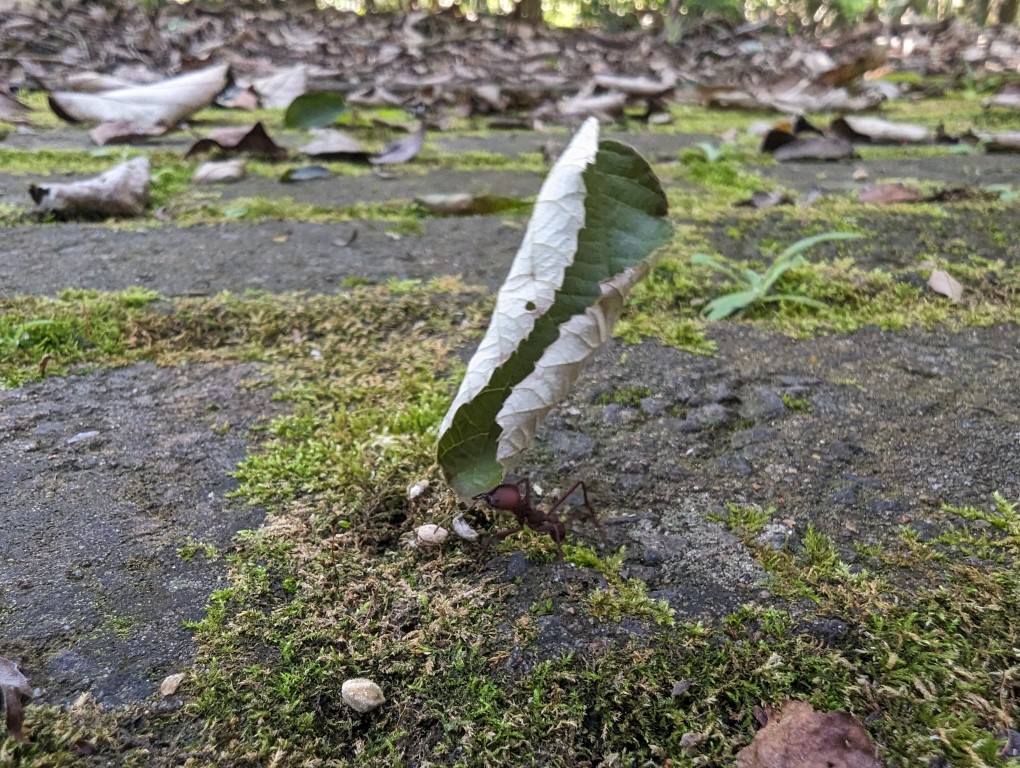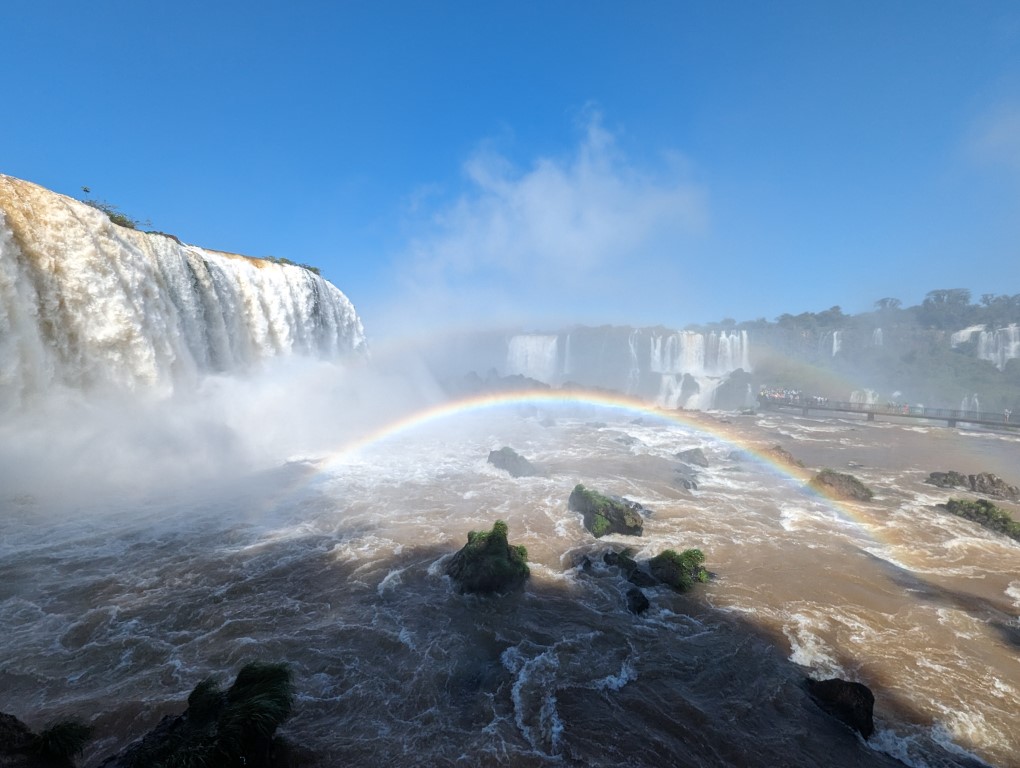
The highlight of the past couple of weeks was definitely reaching Iguazu Falls but we did a few interesting things along the way up the northeastern section of Argentina, following the Parana River through the Misiones province. We’ve certainly seen a lot of water! And a Jesuit Mission thrown in there too.
The province of Misiones juts out like a finger between Paraguay and Brazil making our phones bounce back & forth between towers driving us nuts with messages about roaming and time changes. Driving along, I think we passed about a million termite mounds, some were so packed into the fields it looked funny.
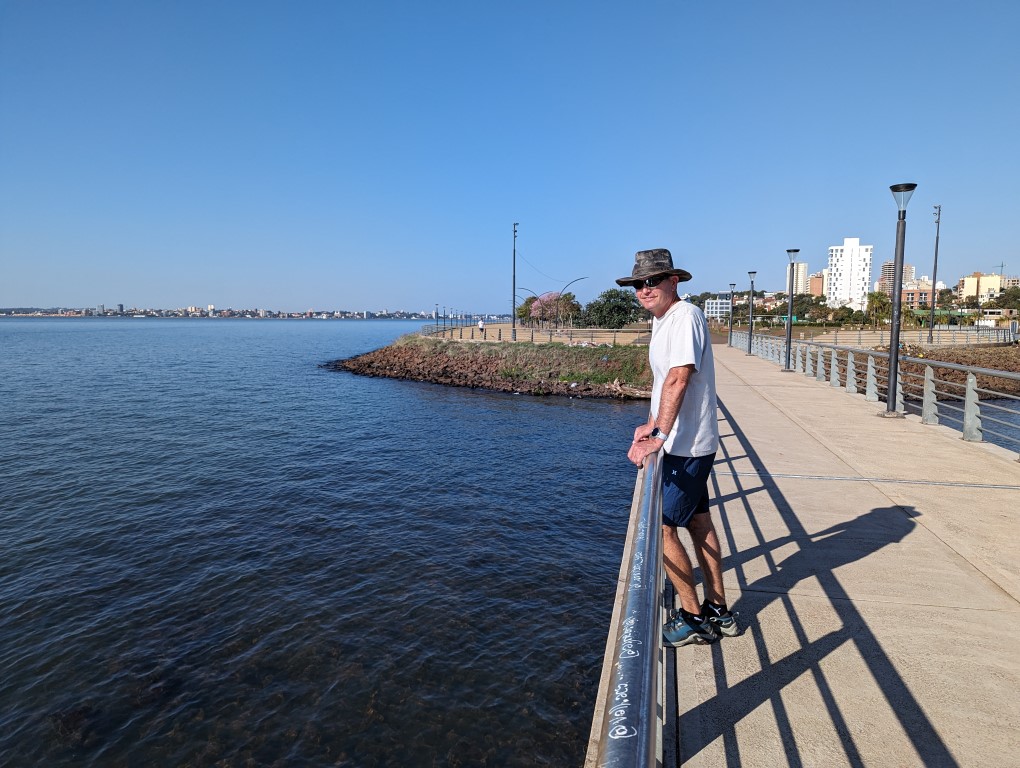
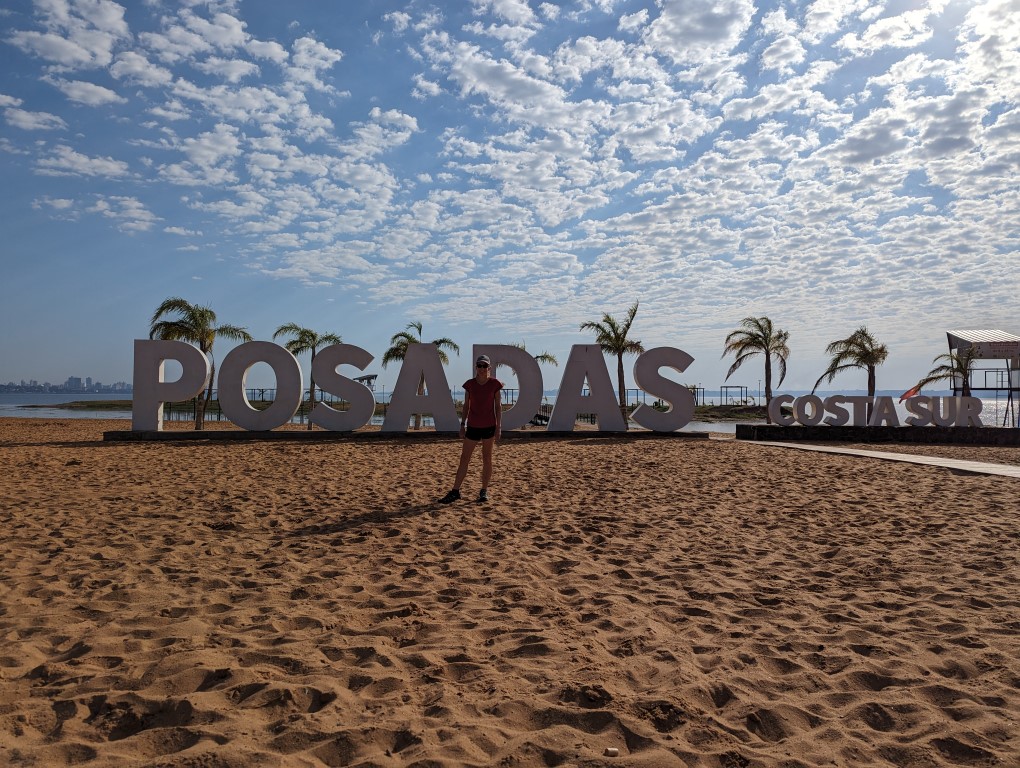
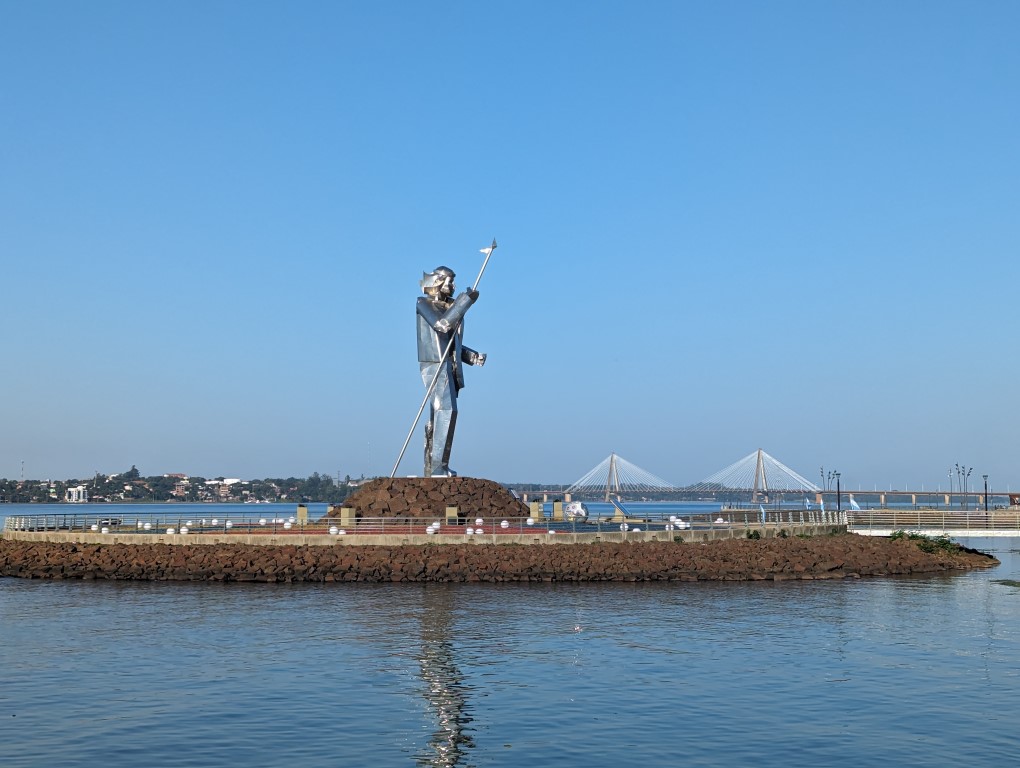
We visited the city of Posadas, the capital of the province. It didn’t have much to offer really, but we walked the riverside path (they call these costanera’s) and went to get some groceries at a larger supermarket. When Jon parked the truck, he put the clutch in to leave it in gear and we heard something snap and the clutch didn’t come back up to position. After taking the steering column covers off, he realized that the rod on the master cylinder that actuates the clutch pedal had broken off. The end that broke was made of plastic (thank you Mercedes!) and was probably fatigued with all the years on it. Consulting with Stefan, a retired German Mercedes mechanic who helps us with so many questions, we found out that those fail all the time! While it was great that this happened in a mall parking lot rather than at, say, a traffic light, it was a problem that we weren’t going to be allowed to stay overnight once the mall closed. So Ivan & Jon went in to high gear driving first to the Mercedes dealer in town who really tried to help but didn’t have our clutch part. However, he did suggest another parts dealer. Ivan drove us to that place where 3 workers gathered looking at our broken bit and after some real hunting around in a spare parts bin, they miraculously pulled out nearly exactly the part we needed and only charged us $6 for it! So we rushed back to the mall parking lot so that Jon could install it and it was a hair too short. Minutes later, the friendly mall security personnel came to check on us and when Ivan showed them how the part just needed a little welded extension on it to be long enough, the guys said no problem, they would ask the building maintenace man to do it because he’s all set up for it. After about an hour and a lot of nail biting as it was now dark, they came back out of the building and handed Jon not only the welded part but also the hand drawn sketch carefully measured to be sure the length was exactly what we needed. Then we all shook hands and they left us to getting our truck back together again. We just went away feeling like every single person was so engaged, friendly and helpful to us and they actually got us what we needed. Another great story. And it’s so good to be able to give our VIN and actually have them be able to look it up whereas in the US it is impossible. Anyway, we were only held up for about 4 hours.
Just outside of downtown Posadas, they’ve provided a large area along the river where overlanders can camp. We drove indirectly there that night because of a car accident and joined several other campers. It was a long day. We met a German couple with a truck similar to ours and got some ideas of places to visit. It was good to finally meet other foreign travelers because overall, we haven’t seen that many. The next morning, we took a nice run on the bike path, then went to do the grocery shopping that got sidetracked the night before with the clutch. Ivan got his laundry done for $30US (what a bargain) and the amount of perfume in it had us all thinking we should wear our covid masks to dilute the smell so we could breathe. We also had a good night out for pizza on the beach.
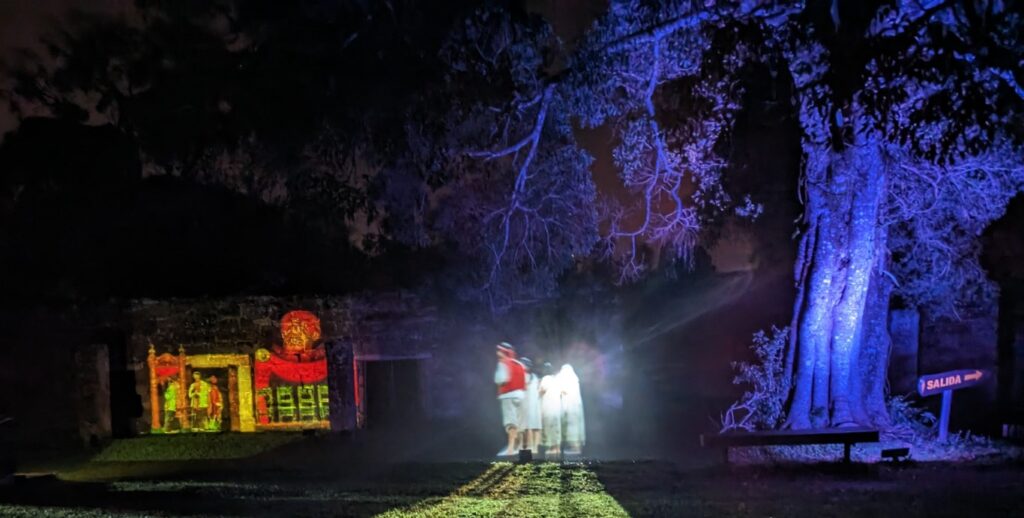
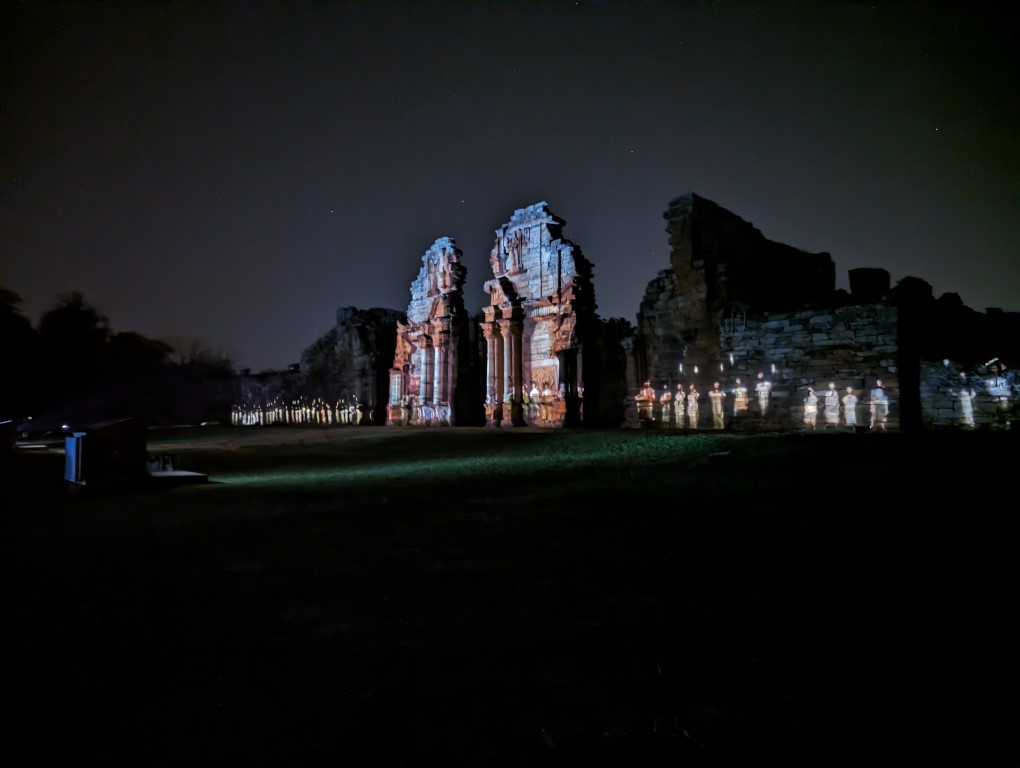
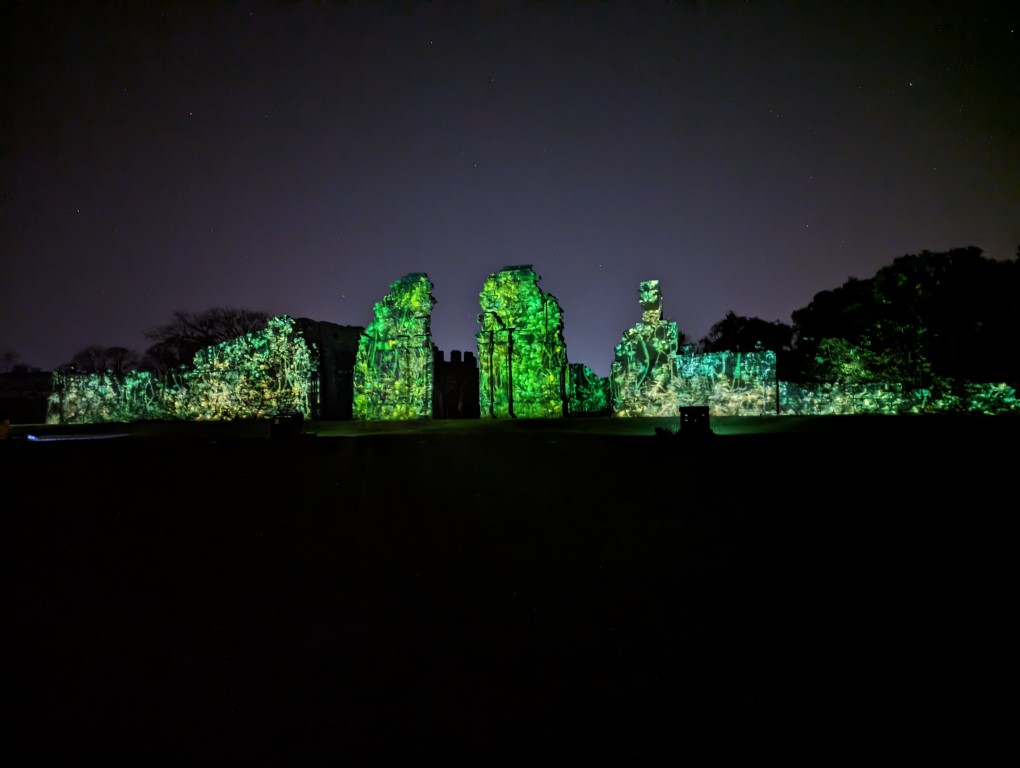
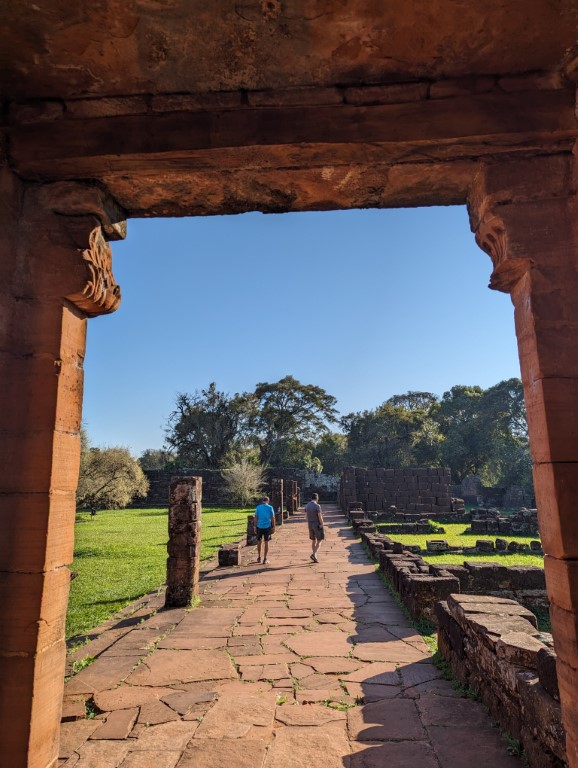
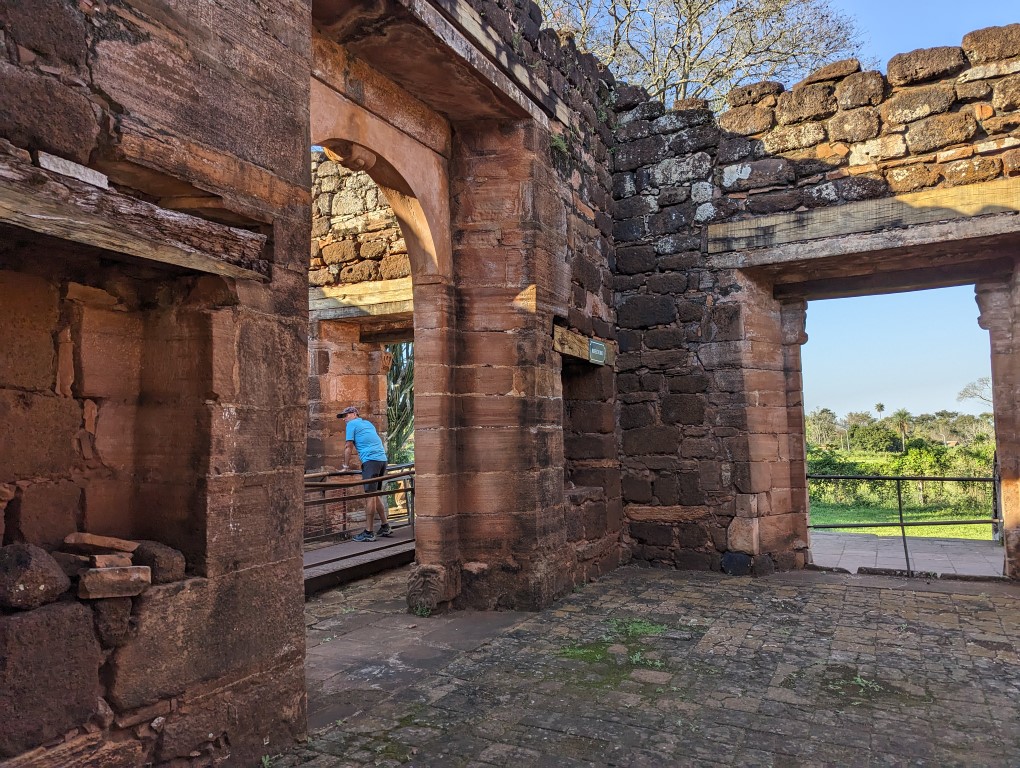
Not far out of Posadas is the San Ignacio Mini Jesuit ruin site. They’re called “mini” because there were apparently some much larger ones nearby. These ruins are the most complete of the ones in Argentina and they have an evening light & audio presentation that I wanted to see. Built in the late 1600’s this mission functioned until the Jesuits were expulsed, at that time about 4000 lived there. Then they sat there, the life taken out of them, until 1897 when they were discovered, then longer until restored in the 1940’s. The evening presentation told the sad story of all that happened to the Guarani native people by projecting images onto trees, the ruins themselves and also onto screens of water mist- which was really cool! We’d never seen this before. Coupled with the music and Ivan’s translation of the Spanish narrative, I learned a lot that night and it all really brought the ruins to life. Then we watched the movie The Mission with Robert DeNiro which firmed up the story.
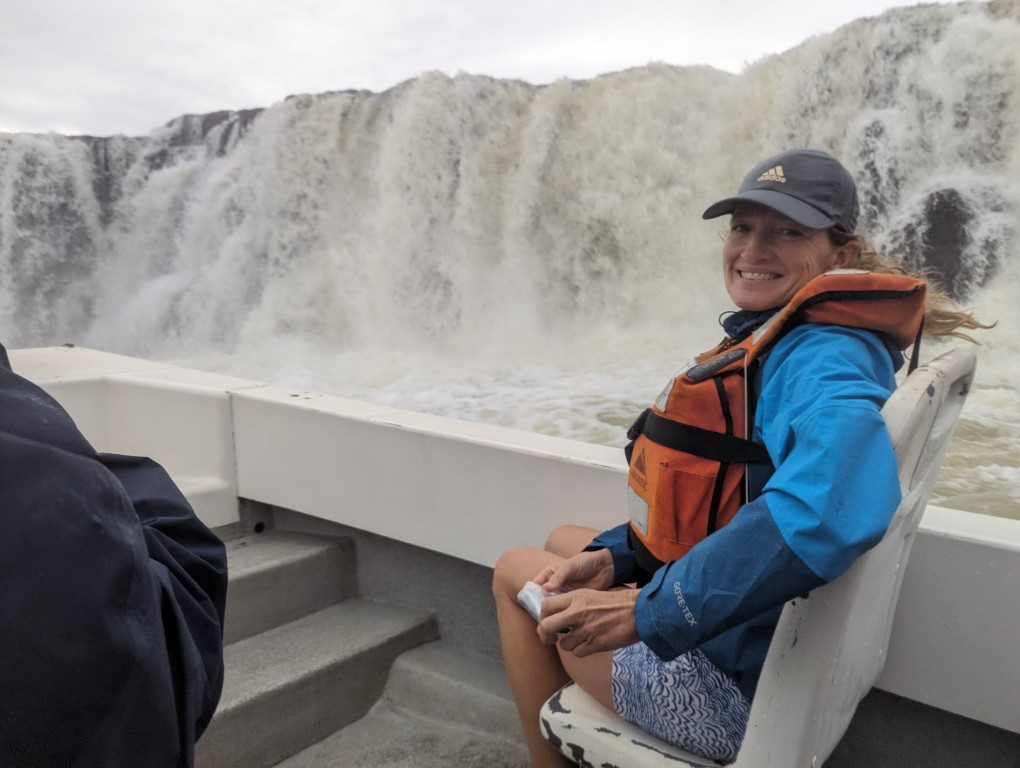
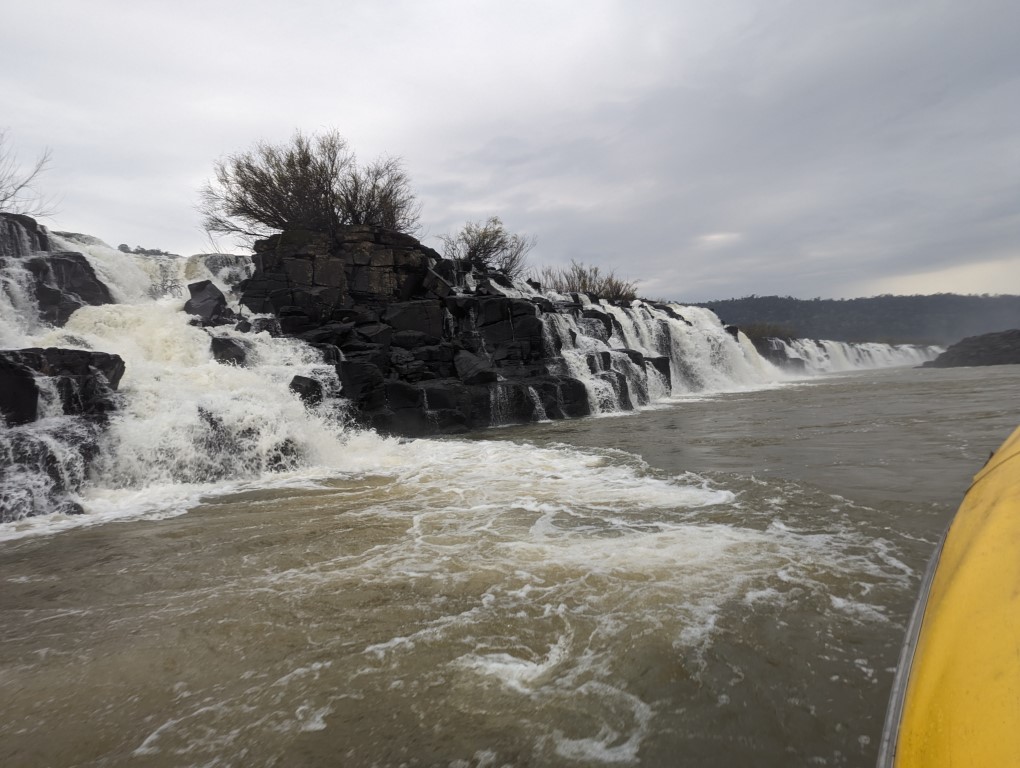
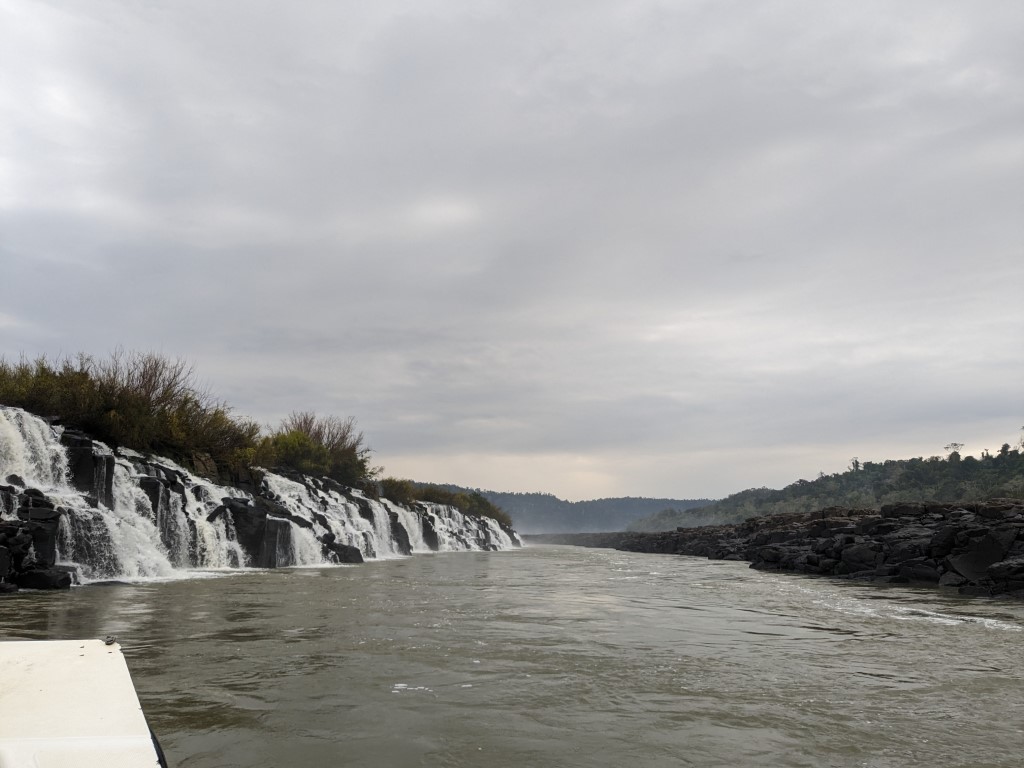
We went back the next morning to see the ruins by day (and check out how the water screens work) before heading out for the Saltos del Macona, near the town of Soberbio. Along the way, we passed mile after mile of yerba tea plantations that reminded us of the highland plantations in Malaysia. They pile it in to trucks to take for processing.
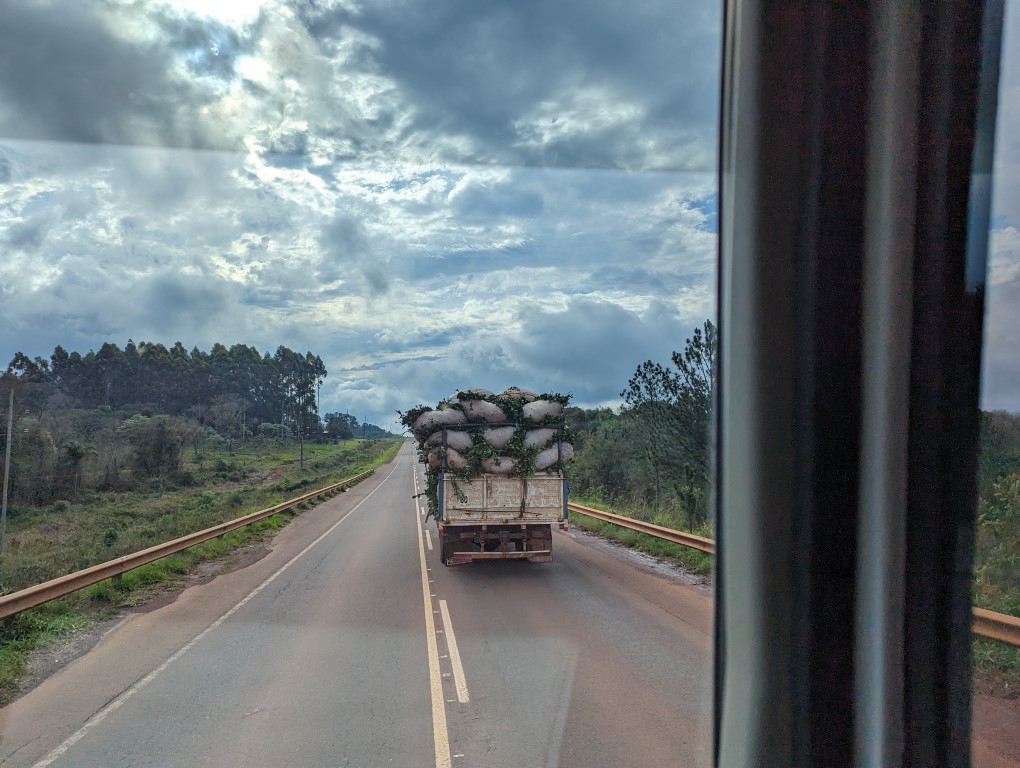
It still blows us away the popularity of this stuff down here. It isn’t just a love of tea. And it has its own equipment so to speak. You’ve got the mate (should have an accent on the e but I can’t find it on my laptop!) cup and the bag of tea and the straw and then the thermos that you carry because the key is to just put a little hit in the cup at a time to keep the flavor right. Well if you don’t want to cradle the thermos then you need a holder, sort of like a picnic basket. And if you’re really thirsty, you want a really big thermos. And if you’re with you’re friends, instead of passing around the whiskey bottle, you pass around the mate cup! And mate has no age discrimination. You see teenagers, parents, and elders using it. We started taking note just for fun of where you see mate cups and who uses what sort of system. I’m still building my collage of examples but here are a couple.
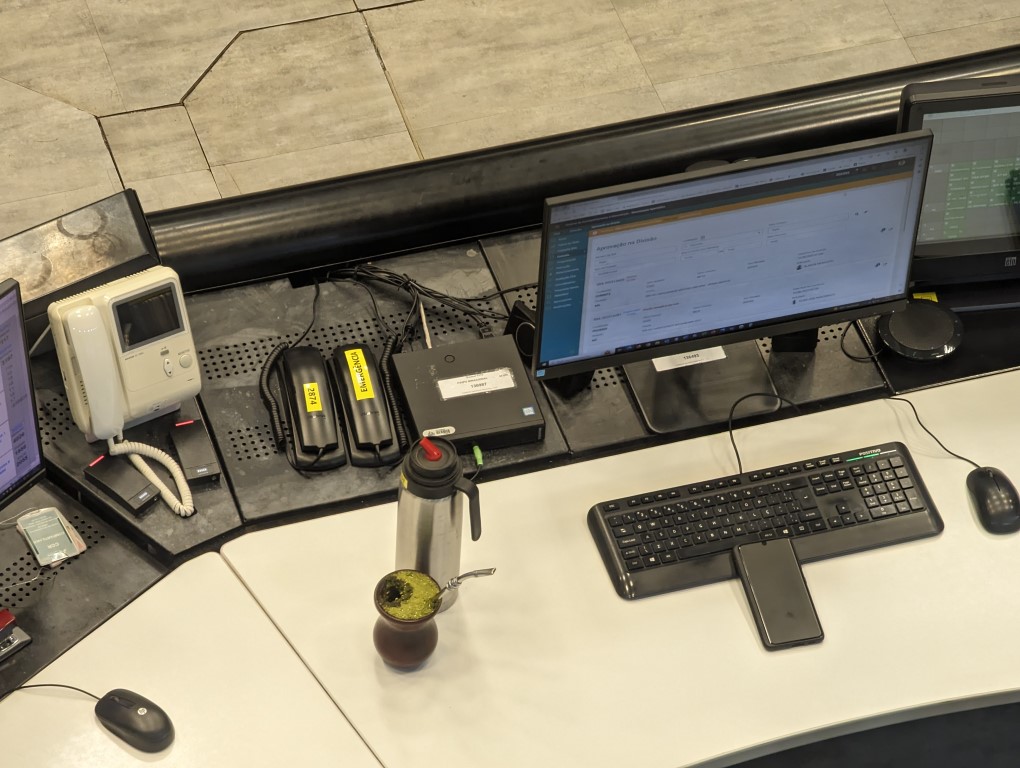
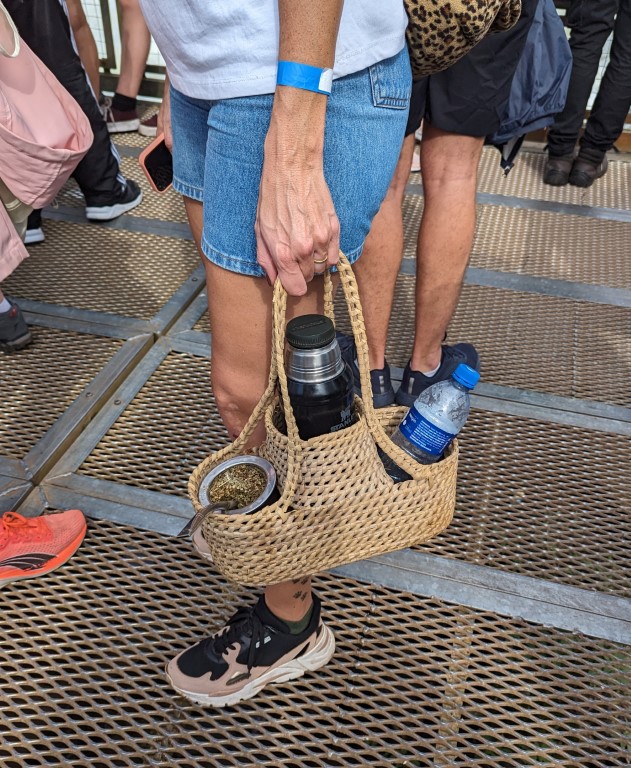

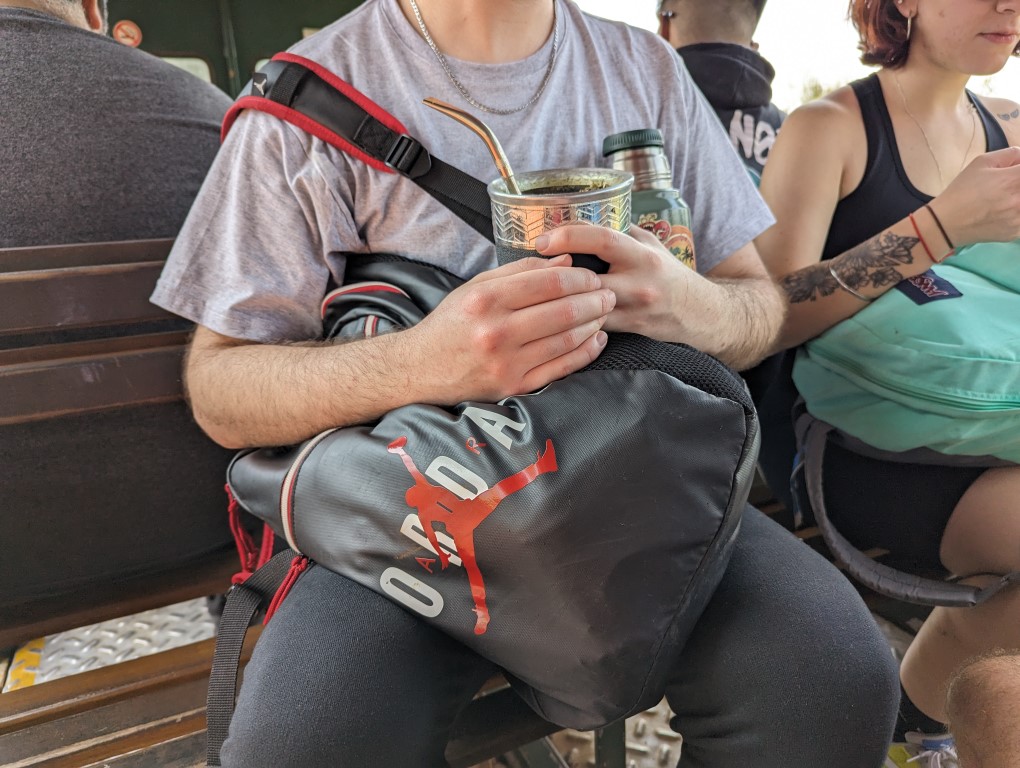
The Macona Falls, in the Misiones area of Argentina, are unique in that they run along a geological fault in the bed of the Uruguay River. The fault divides the river lengthwise so that water spills over the shelf between the two sections making a 3 km long waterfall. Short boat tours run up the river parallel to the falls so you get a really different perspective than usual. It was an unsettled day but we got out on the boat between raindrops and it was cool to see the falls. I accidentally put the photos up above this writing!
Wanting a place to park for a couple of nights and sort of catch up on things, we pulled into a Club de Pesca campground on the Pirana River that had covered palapas and a little restaurant that supposedly served up good fish. We took a red mud run in the little town that morning and we see how if it rains the clay turns into a slick mud that is hard to get off our shoes and everything else. I was pretty excited for the fish out on the deck overlooking the river. Both Ivan & I ordered up nothing other than Piranha of course! And it came out looking pretty ok. But we soon realized it wasn’t cooked enough and mine seemed especially oily which left me feeling ill for hours afterward. So disappointing. I think I’m all set with pirhana now! While placing my order, I asked the lady if I could get a cup of mate since I’d never tried it. She looked at me like I was nuts, went and got her personal cup and poured in some hot water from her thermos and handed it to me. So…. I took a swig off her straw like a true local and thanked her. It tasted like bitter tea to me.
We continued moving northward through the countryside with long views and a start to rolling hills rather than pancake flat grasslands. We do notice a lot of very old cars on the road. Like the ones we drove back in high school. I said something to Jon about isn’t it great that they keep these old cars on the road and he laughed and said it is probably not because they want to but because they have to. Probably true. We were out in the countryside. We now refer to them as vintage car enthusiasts. Haha.
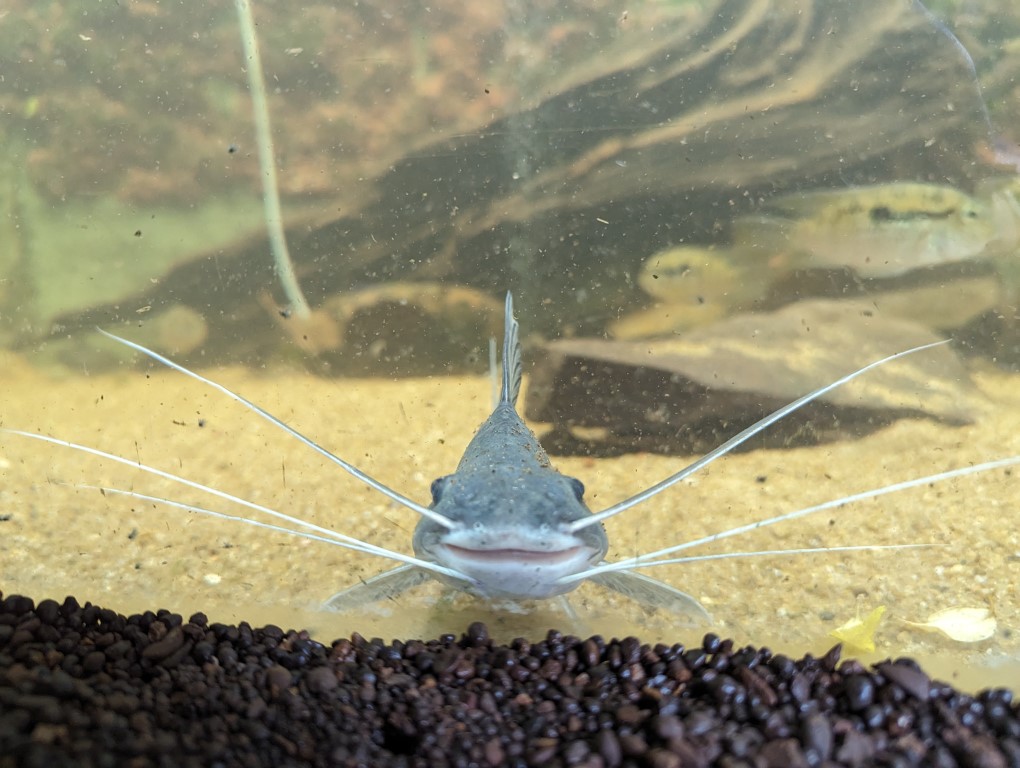
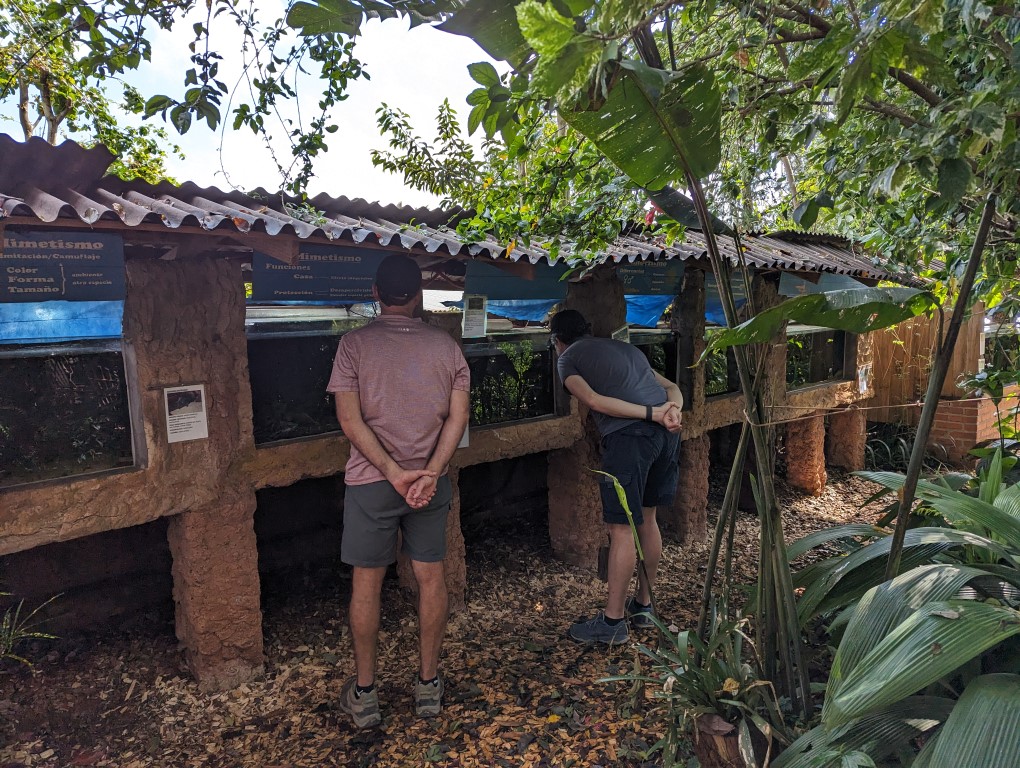
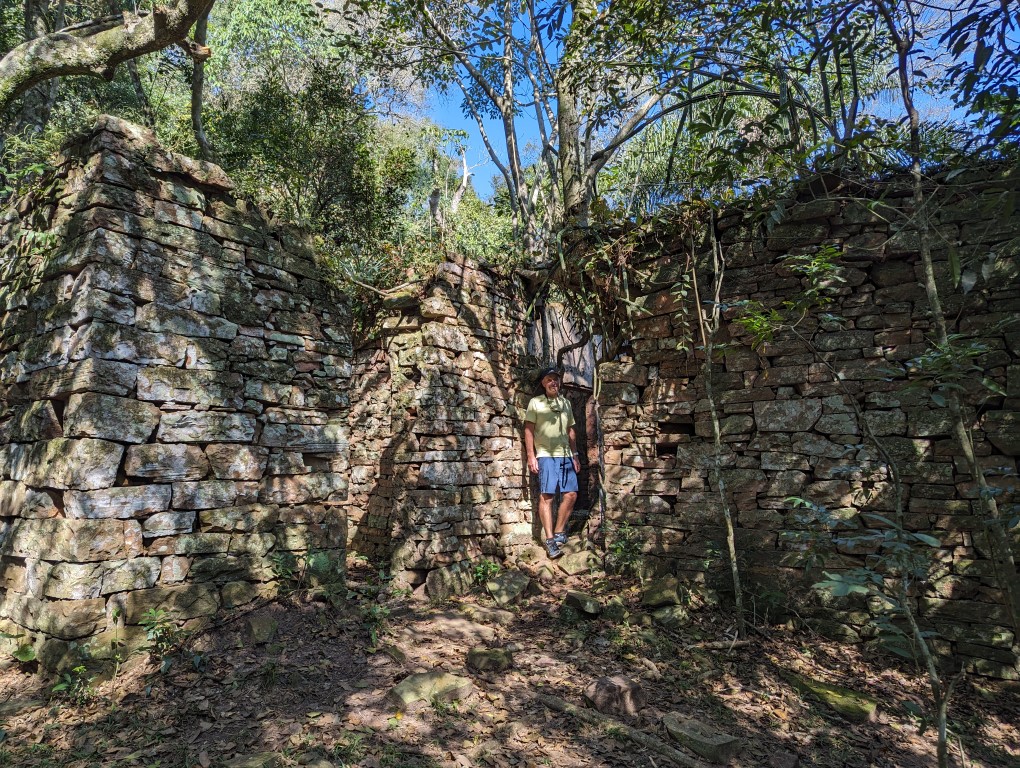
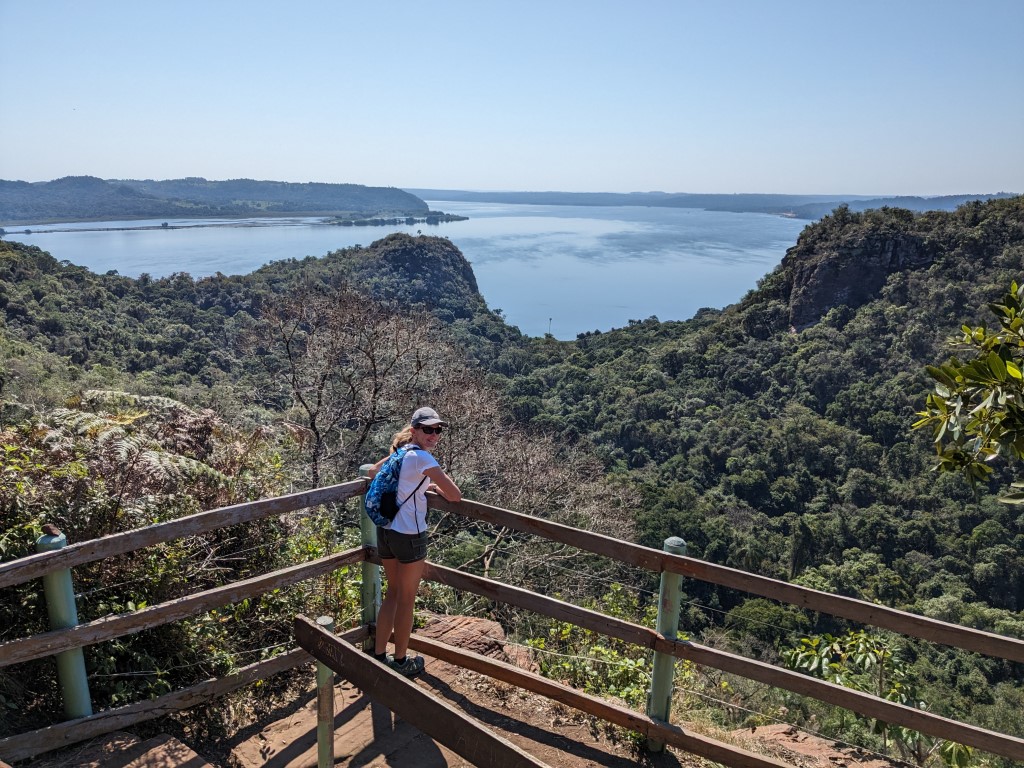
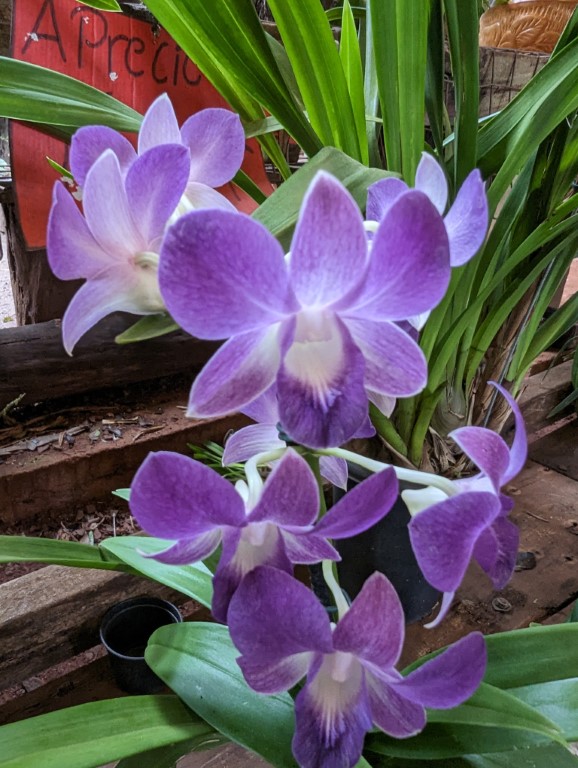
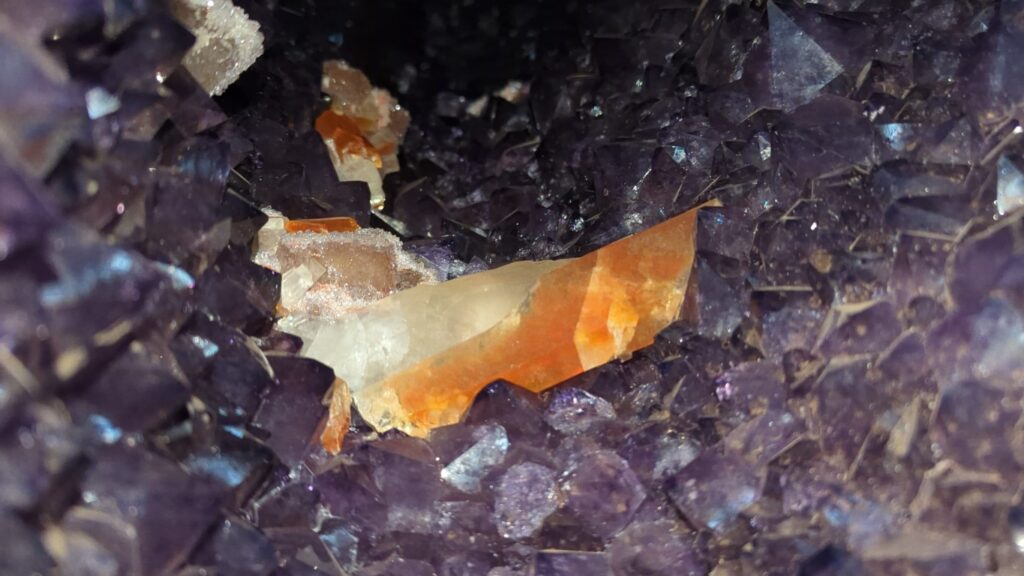
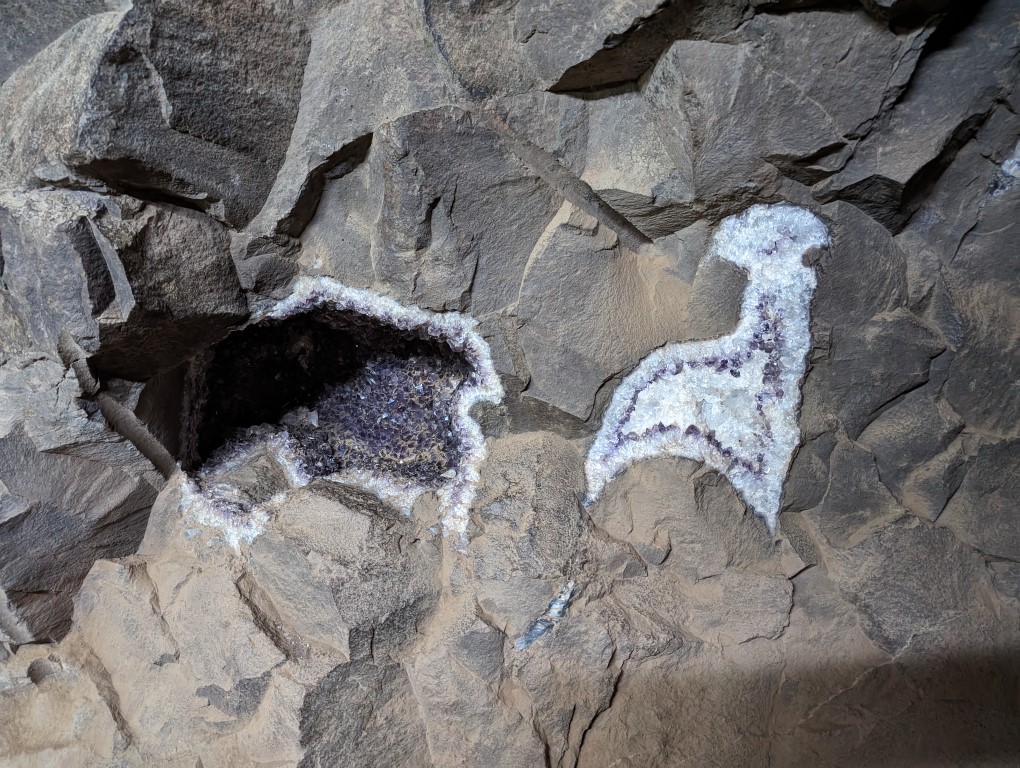
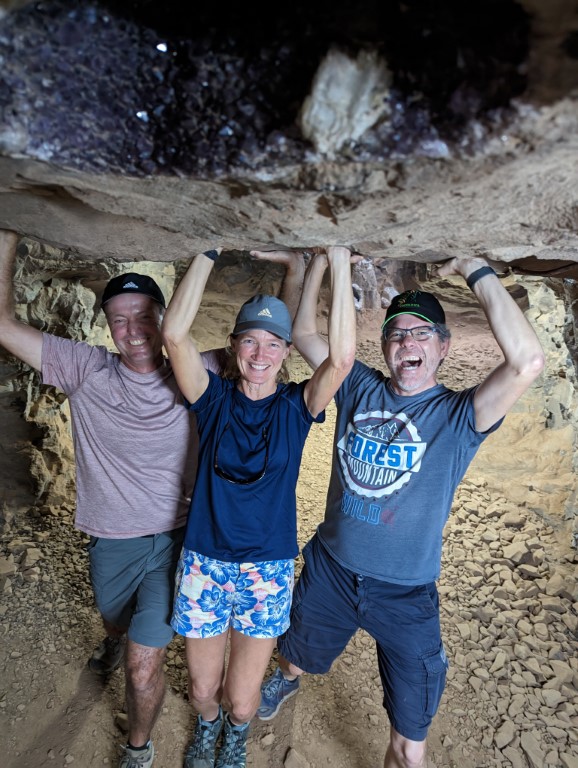
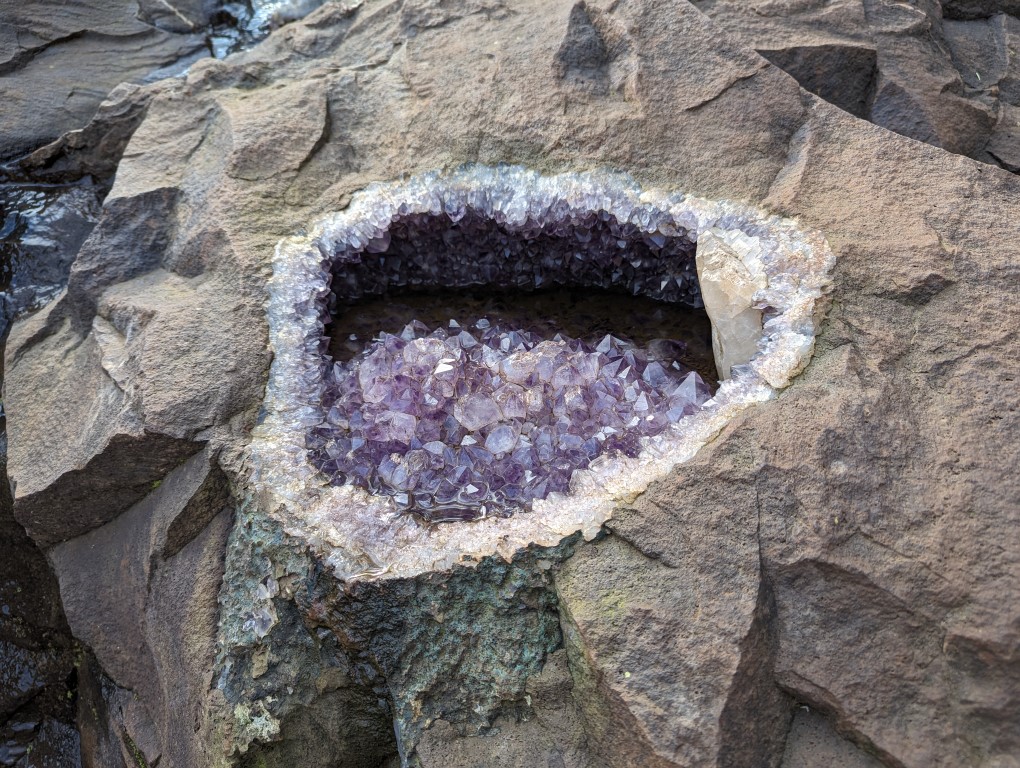
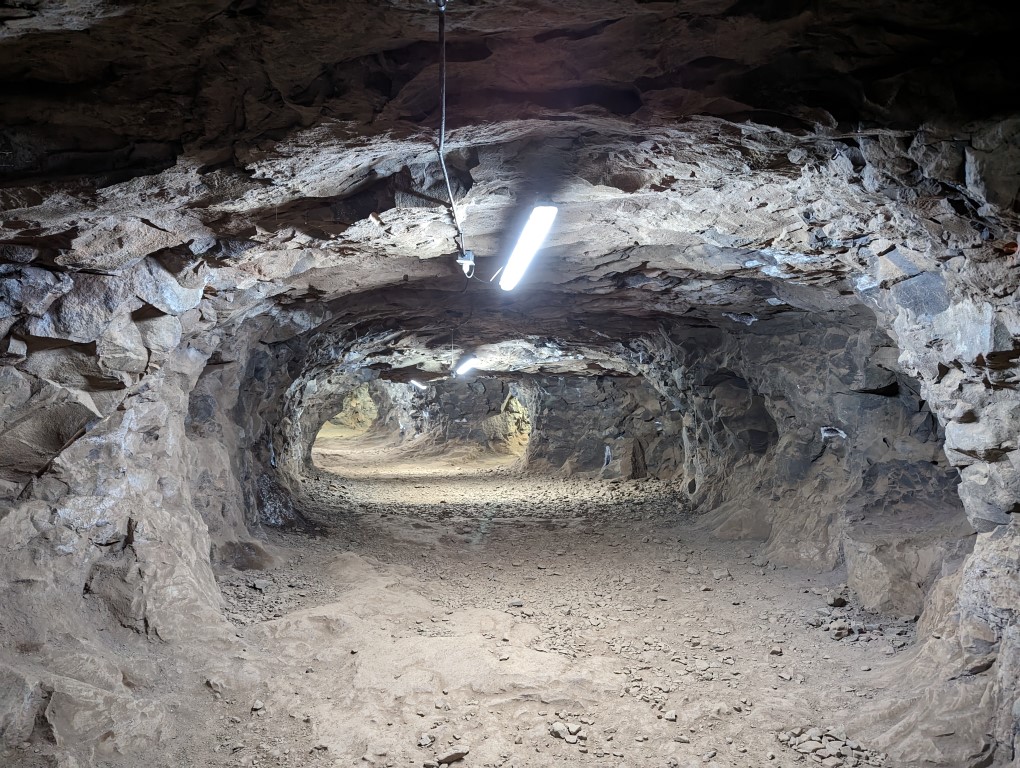
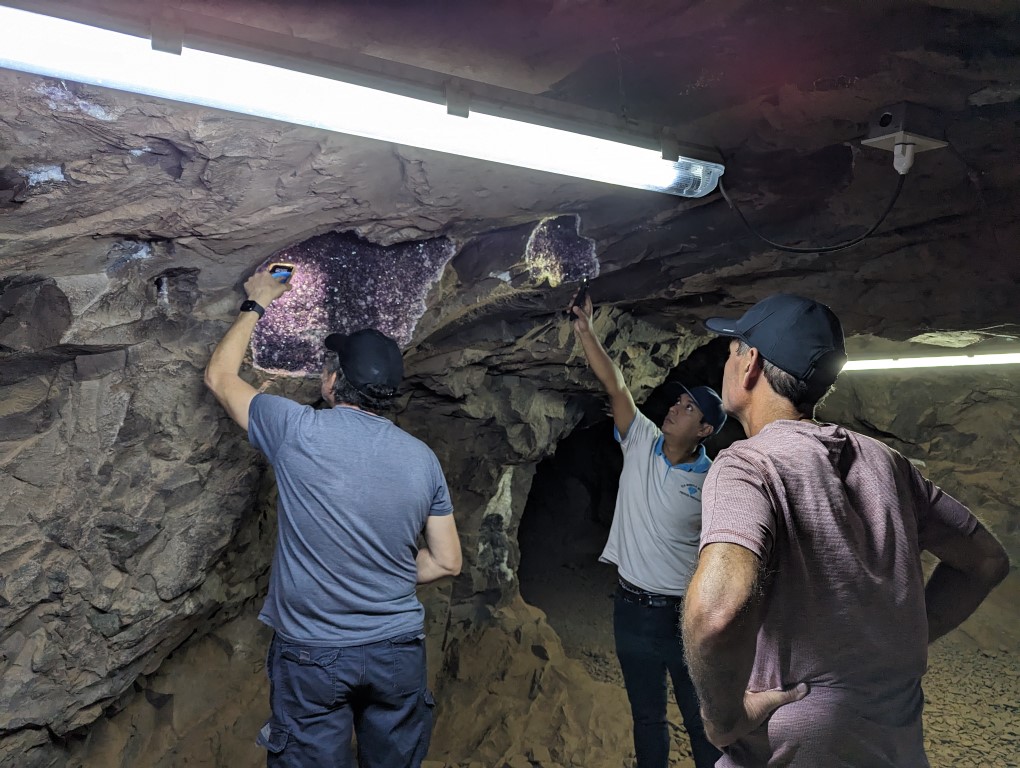
We visited a couple of other small parks, did some short hikes, went to an aquarium, an orchid garden and worked our way to a gem mine just outside of Iguazu that the German couple recommeded. The Cia Mineras in the town of Wanda is an amethyst mine and you can take a little tour to see how they naturally occur in the stone and the traditional low cost way of getting these gems out. Our English speaking guide took great pride in helping us take photos and telling us all about how they mine it. If you drill a small hole where a geode is and pat your hand on it, you can tell how big the geode is by the sound of the echo. It’s the old way of doing it. Now, they most often use a tiny camera.
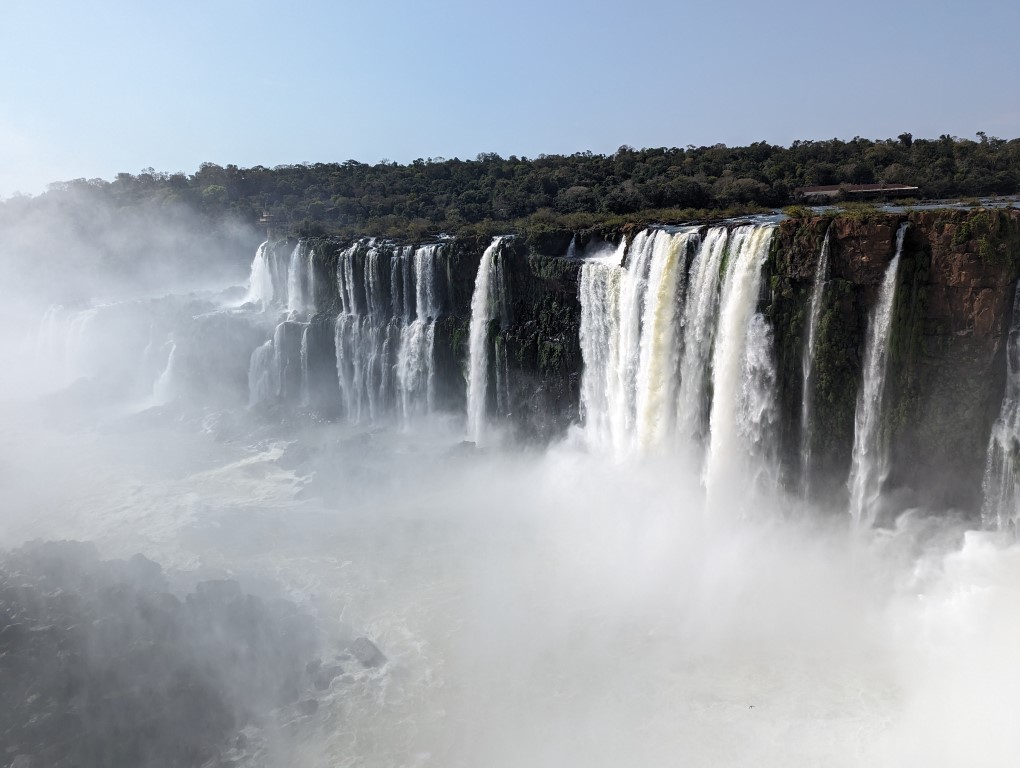
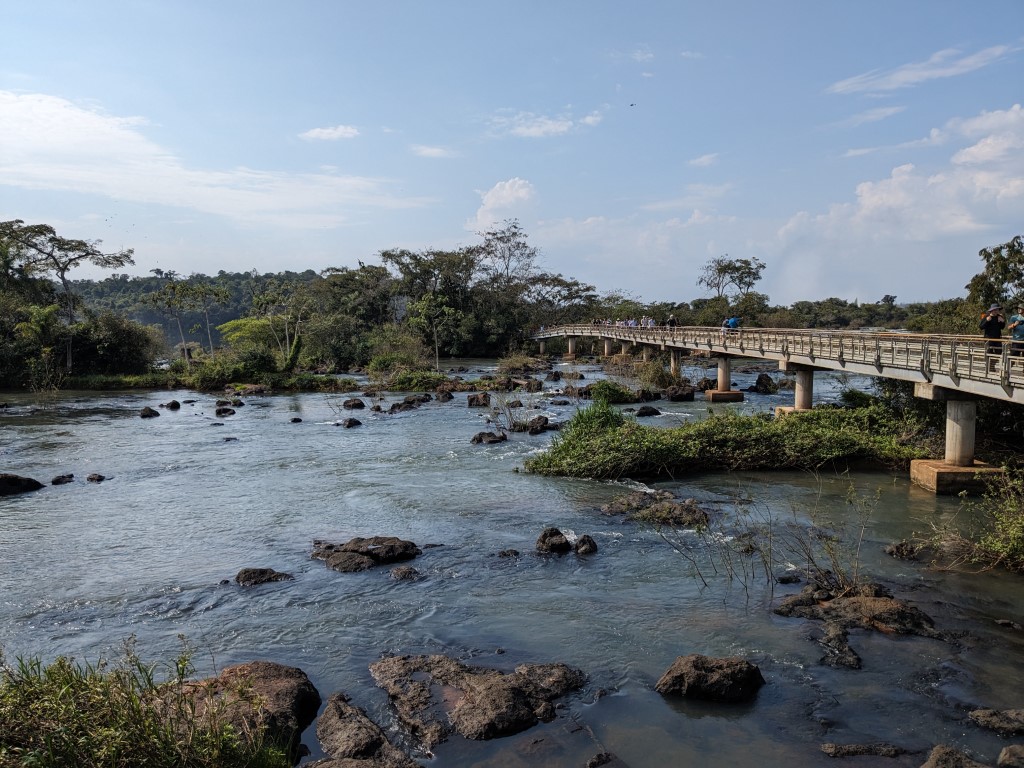
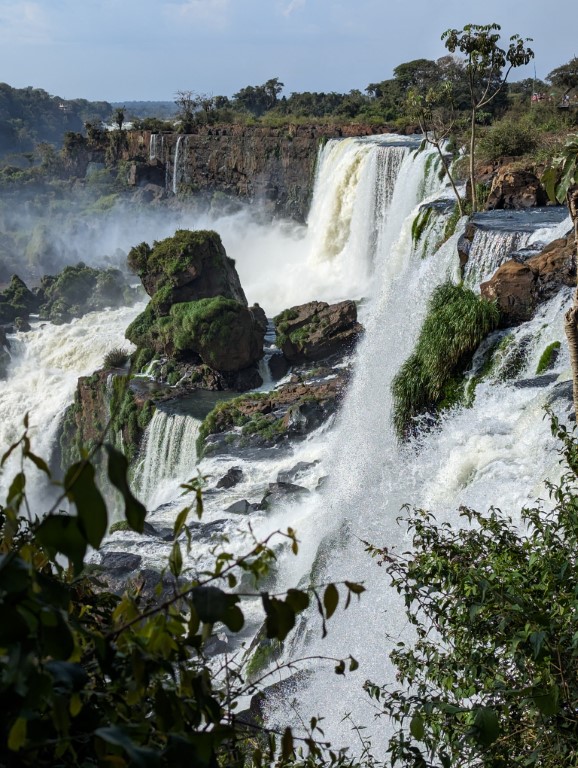
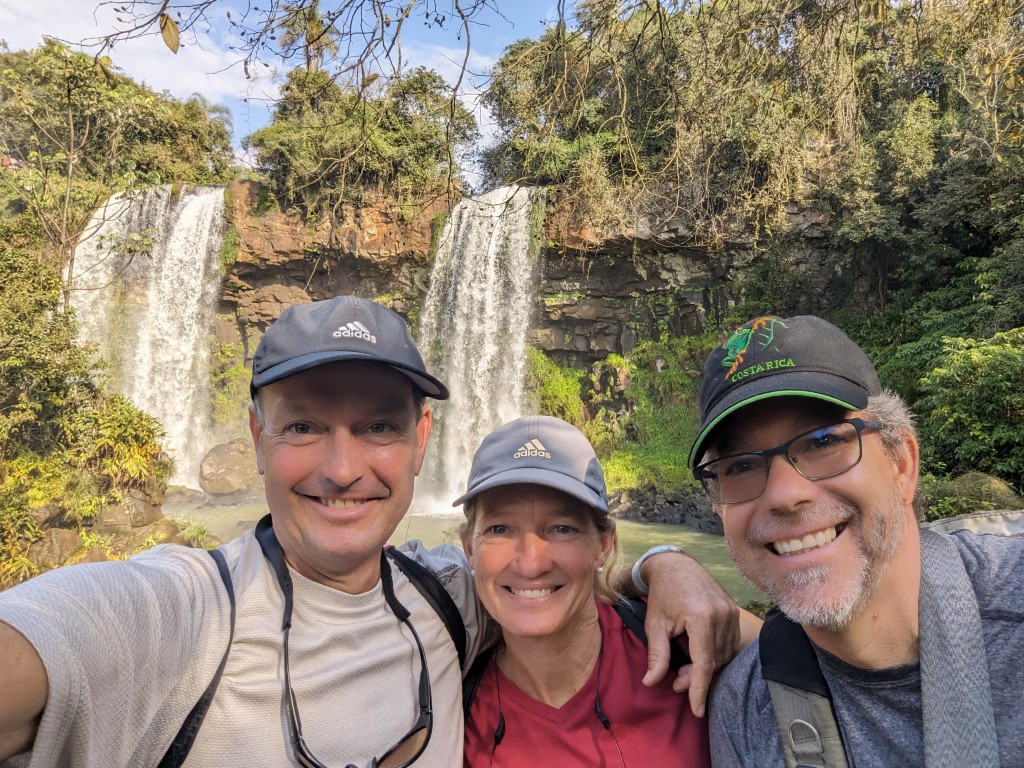
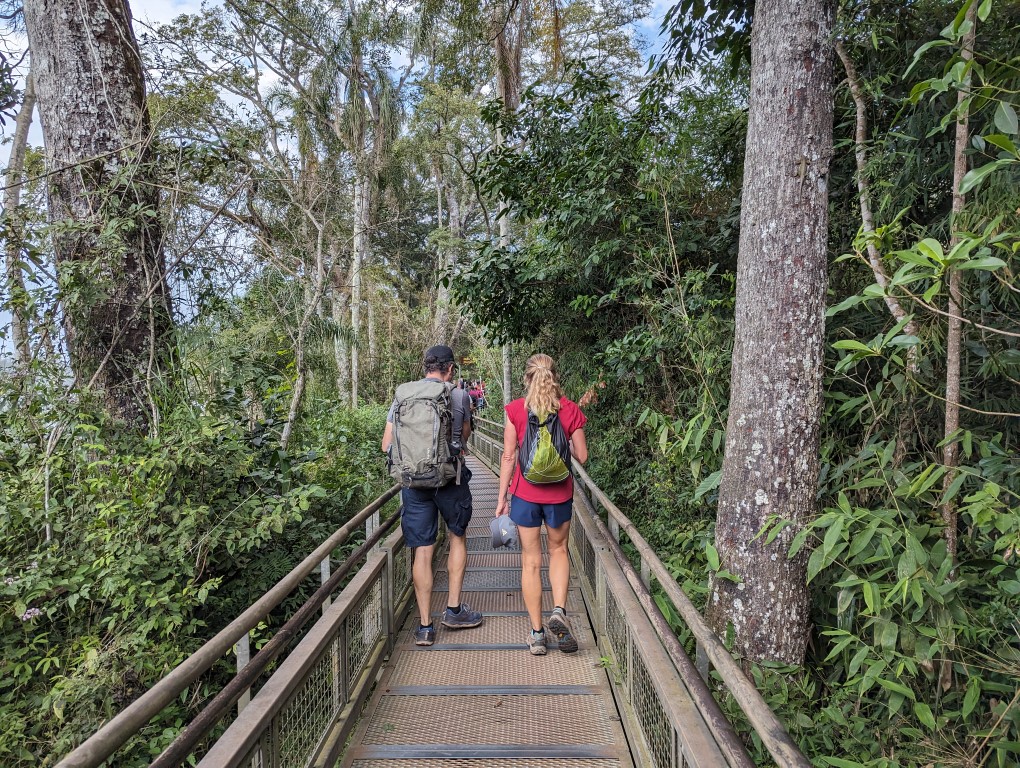
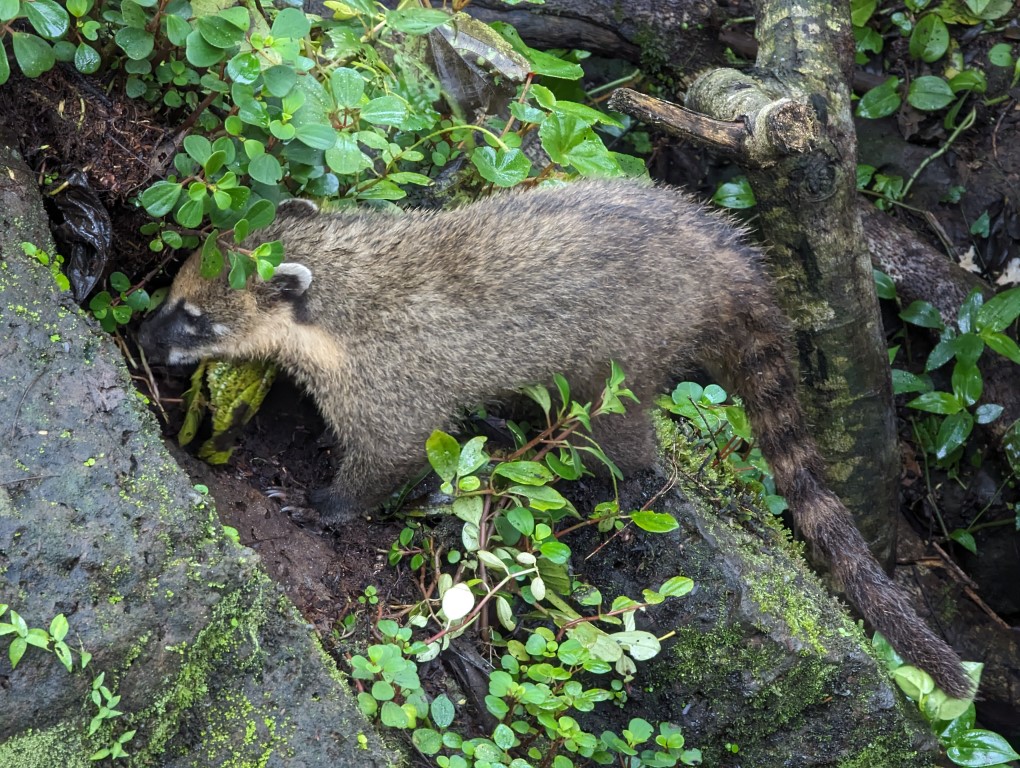
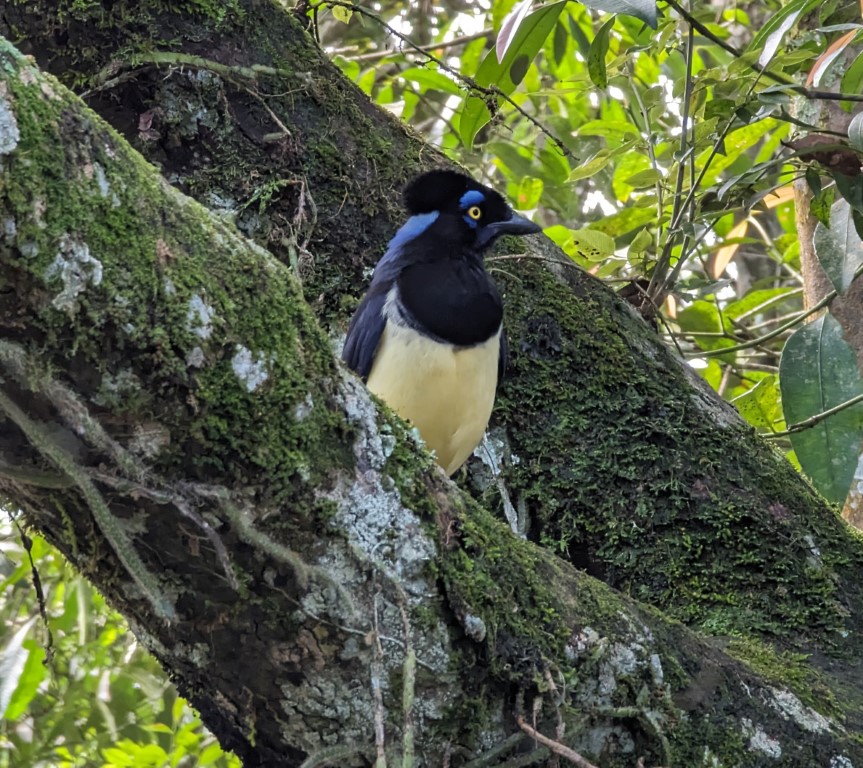
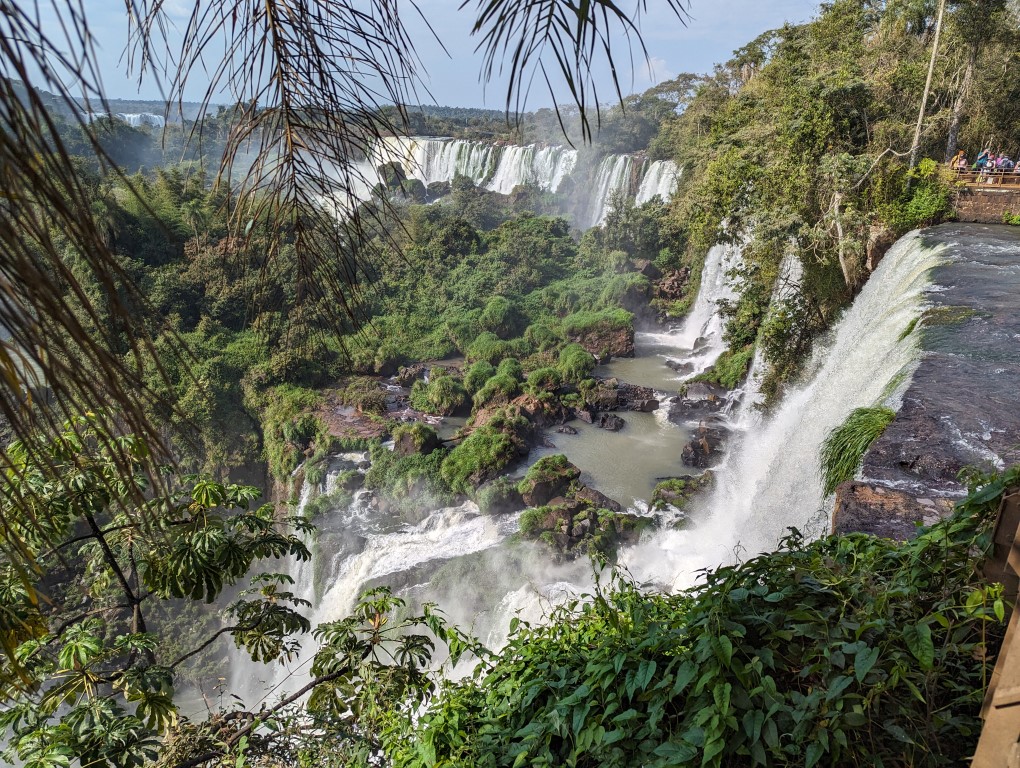
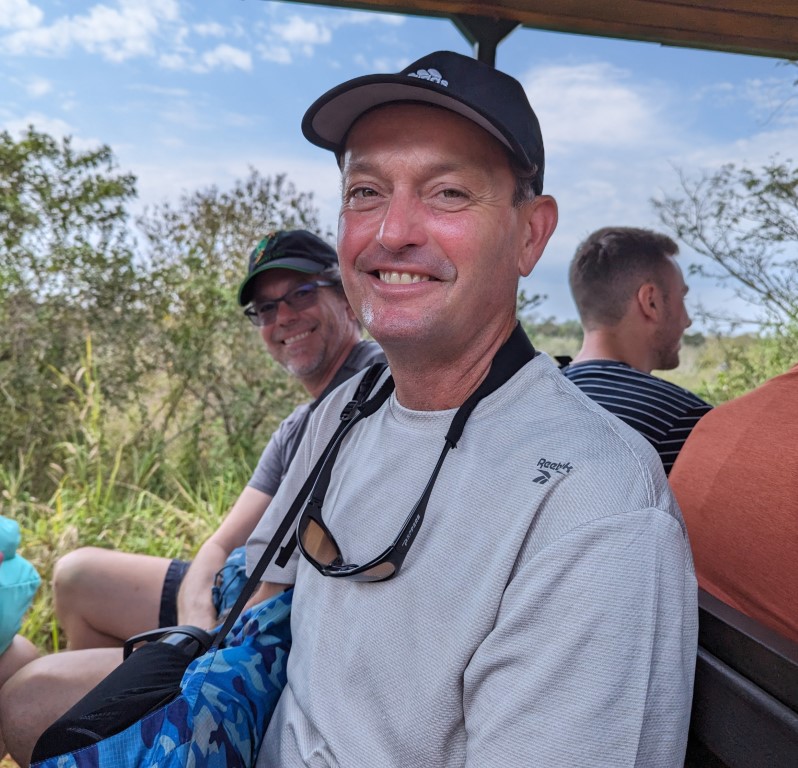
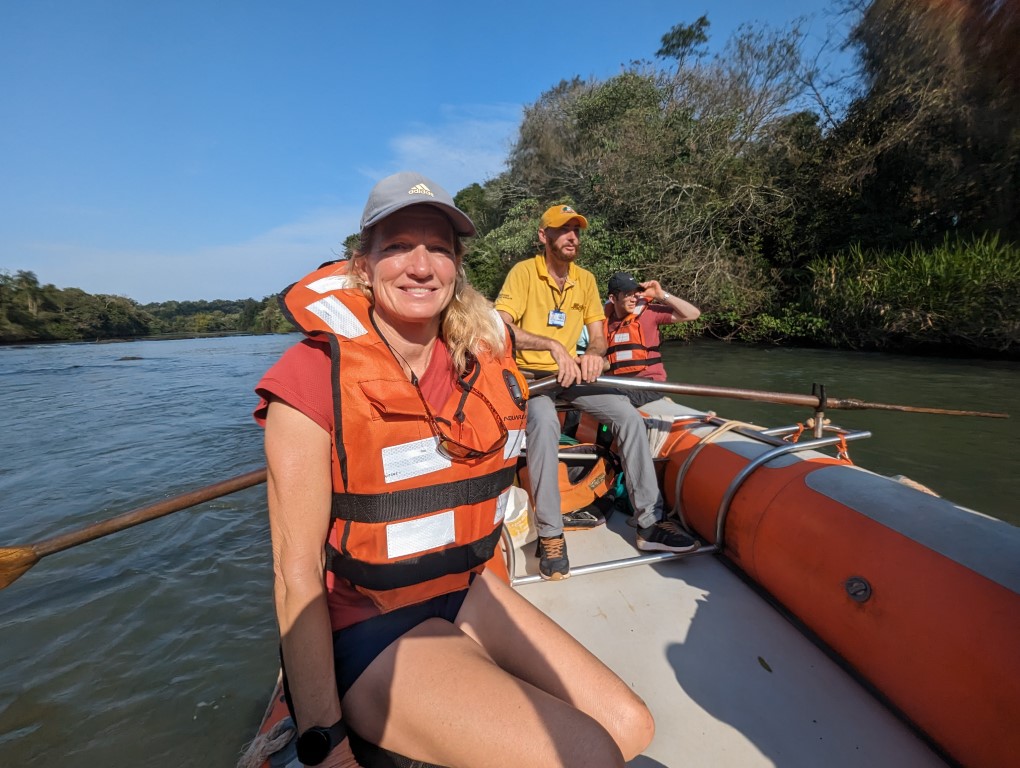
Then we made it to Iguazu and got ready to do the Argentinian side of the falls the next day because we were going to have great weather. And we did! We spent 2 days doing all the trails at the falls taking it all in. It truly is an impressive sight to behold. We’ve never seen anything as big as these and as many separate waterfalls in one place. The green foliage makes them extra beautiful. At the end of the first day, we floated down the quiet part of the river on a raft. We saw a cayman, monkeys, toucans, coatis, tons of butterflies and a lot of people! There were so many butterflies that we each had a turn carrying them on our heads. We appreciate how the Argentine side has top notch trails and elaborate boardwalks that enable you to see the various falls from many different vantage points. The park was perfectly clean and organized and well maintained. One thing I didn’t like was they had a little train that you had to take to get out to the Devil’s Throat which is the biggest fall. For some reason the walking trail was closed the day we were there. We could have walked faster than the train went because it was so slow. We joked around making baaaaa sheep noises because it’s how we felt being herded around. On our way out of the park, we stopped at a mate shop with a really nice lady who explained everything you’d want to know about the stuff and you could try it both hot & cold. We each had some and felt the buzz from it! OK. So now I can see that this stuff is addictive once you get hooked. None of us will be getting that way but at least we understand a little more.
Argentina is known for it’s premium ice cream. We didn’t know this until we got here but we sure are thankful! There are really nice ice cream shoppes in many of the larger towns and between that and all of the IPA beers you can buy we have to watch ourselves. We could get hooked on this.
We spent a couple days more doing some truck maintenance and then crossed the border to Brazil. It wasn’t a fast crossing, but it was friendly and no one inspected our truck. The paperwork made sense too which is pleasant. While at first we thought it might not be necessary to see the falls yet again, we had read that it’s really worth doing and Ivan wanted to go. We found a campground within walking distance of the park. We enjoyed sitting out in the grass listening to all of the birds.
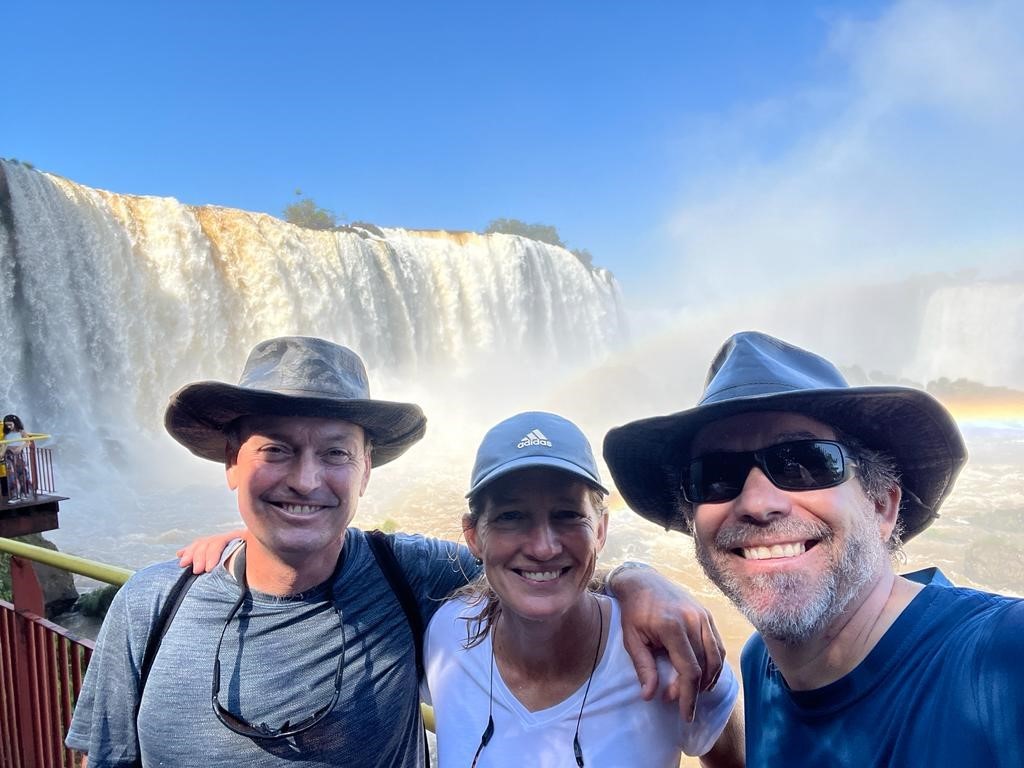
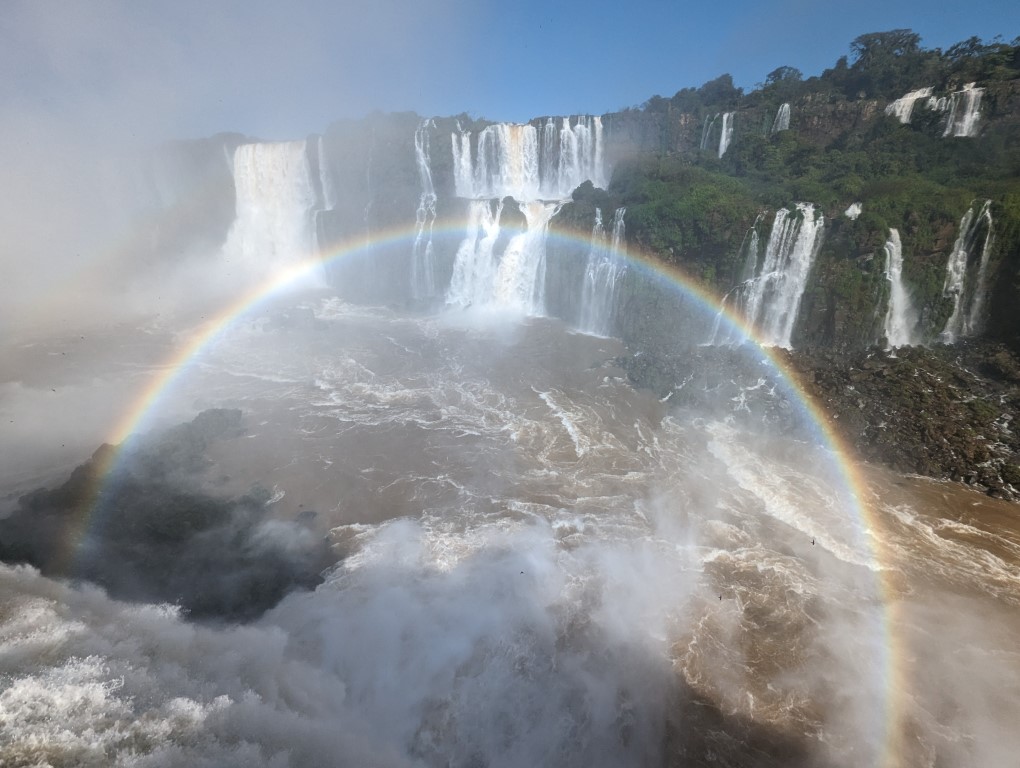
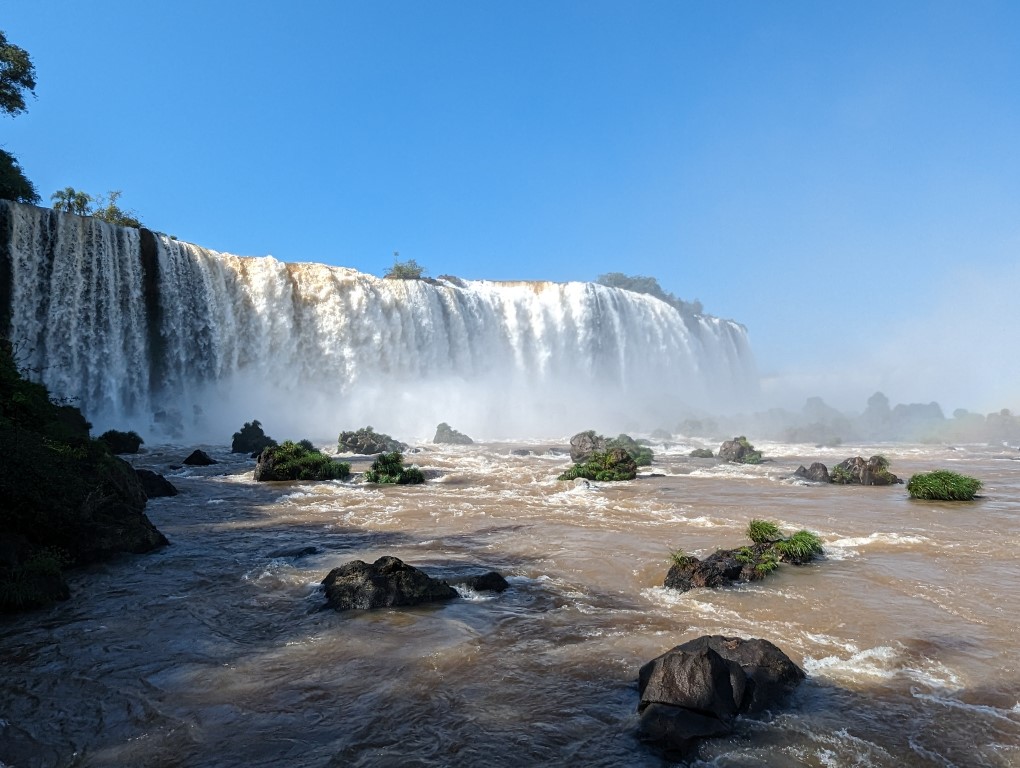
Well we sure are glad we changed our minds. It’s like having the best seats at a concert with everything right out in front of you. With everyone packed on one trail to reach the viewpoints, it doesn’t have the same feel as Argentina and I felt a little disgusted for a bit, but then the views opened up. The sheer size of the falls is much more apparent and crazy to witness. The rainbows were beautiful too. One of the most meaningful things for me was realizing that the swallows live behind the falls and they fly through them & also around the backside of them constantly. I wish we could’ve gotten a good pic but they’re too fast. How they do that we don’t know but they manage it and not just a few. Crazy.
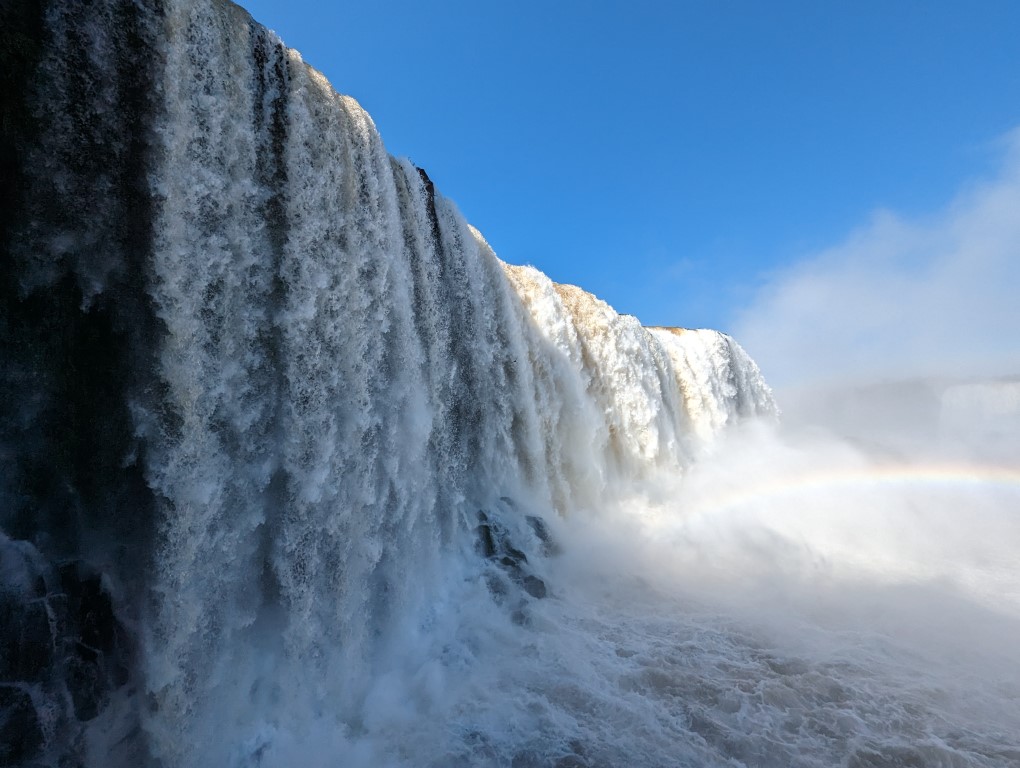
And lastly, because I know this is getting boring at this point for the reader…. sorry, but I got really behind and this is sort of my diary…. We visited the Itaipu Dam, just outside the city of Foz de Iguazu.
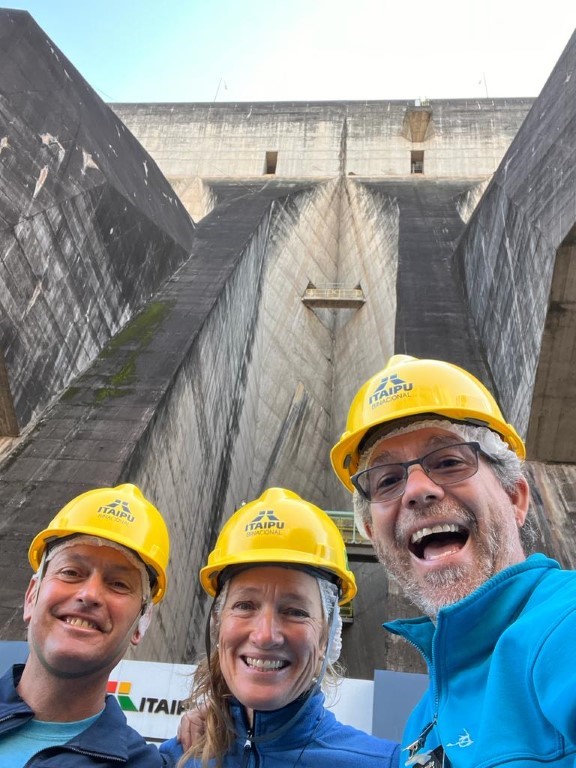
The second largest hydroelectric plant in the world next to the one in China, this dam was a collective effort between Paraguay & Brazil. It took 18 years to build it, completed in 1982 and it displaced some 10,000 people. But it supplies almost all of the power needs of Paraguay and somewhere around I think it was 20% to Argentina. There is a lot of emphasis on everything being split down the middle. From the yellow line painted on the floors in the dam that mark the border of the two countries to the fact that there are equal work shifts for both Brazilians & Paraguayans to each piece of equipment in the control room being translated between Spanish & Portuguese (all staff need to speak both languages), things are fair & square. So they say.
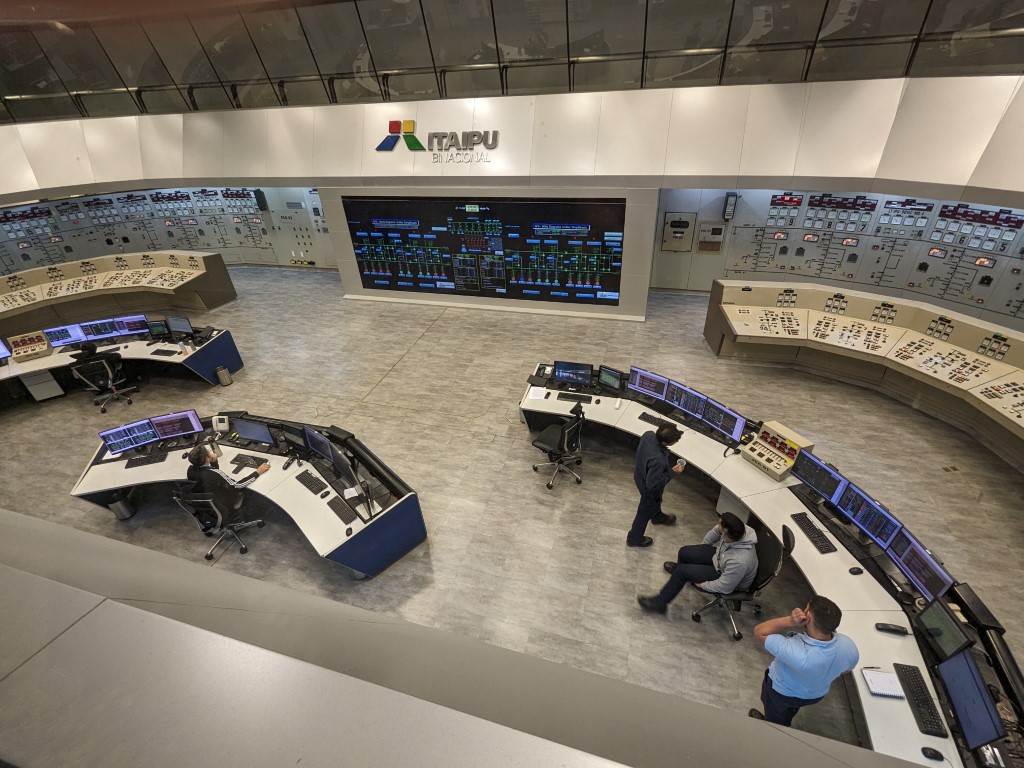
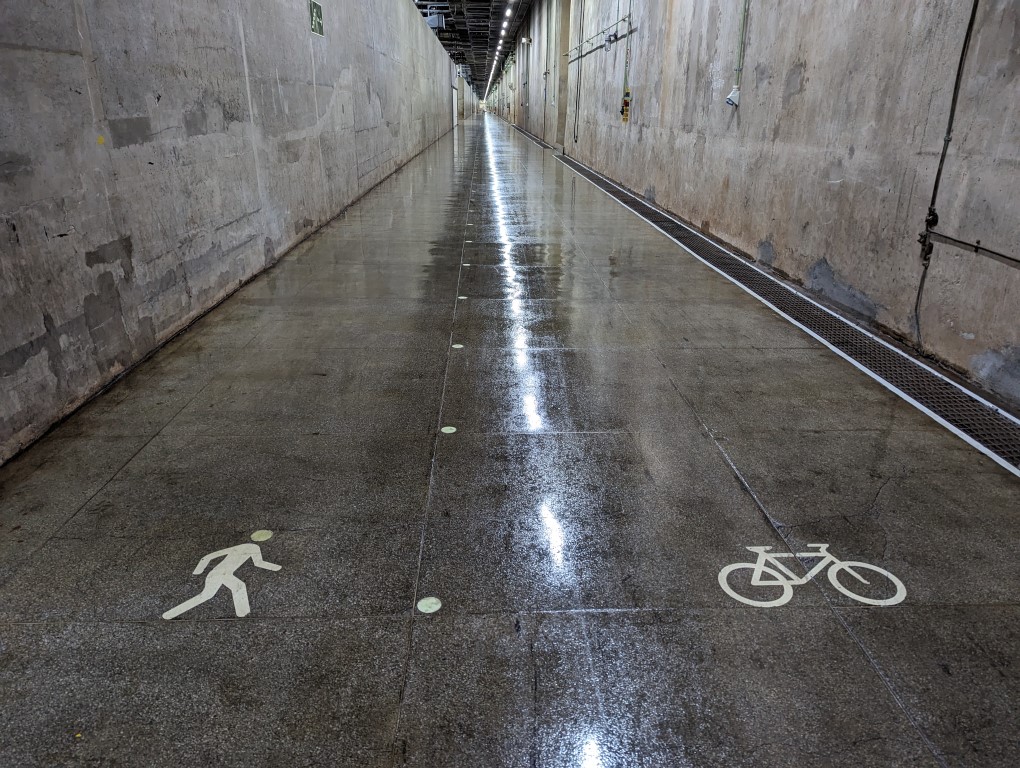
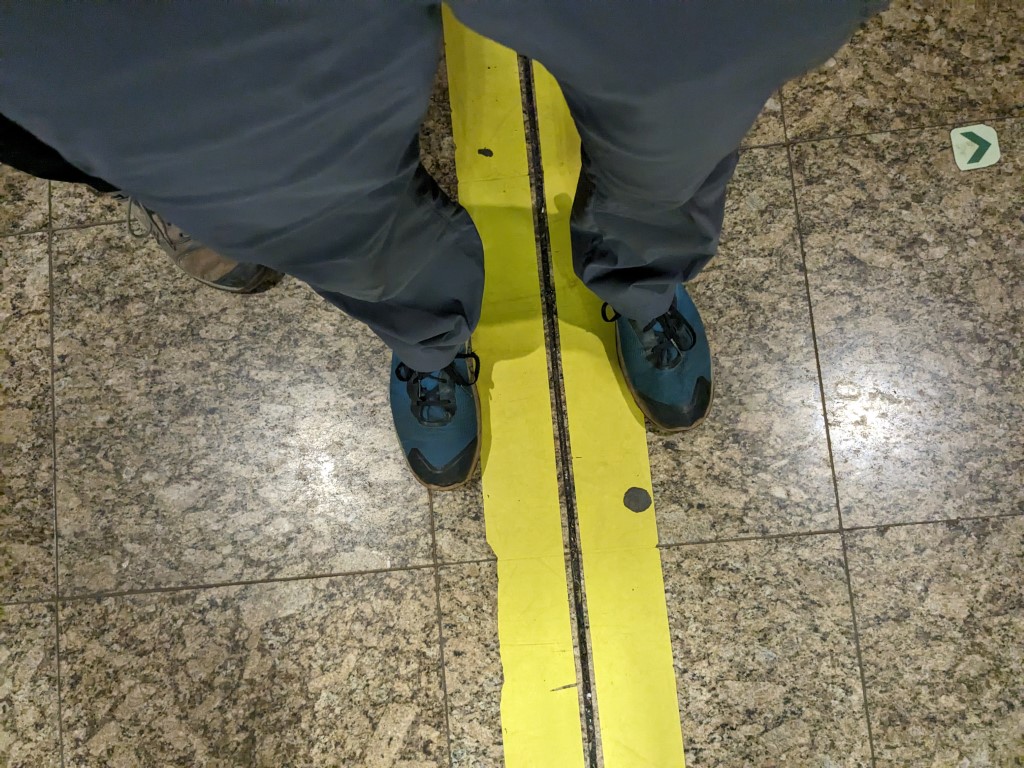
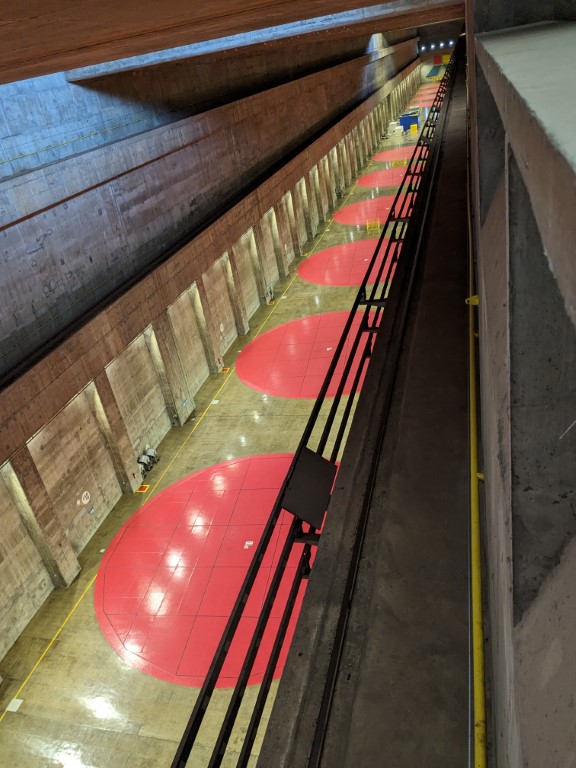
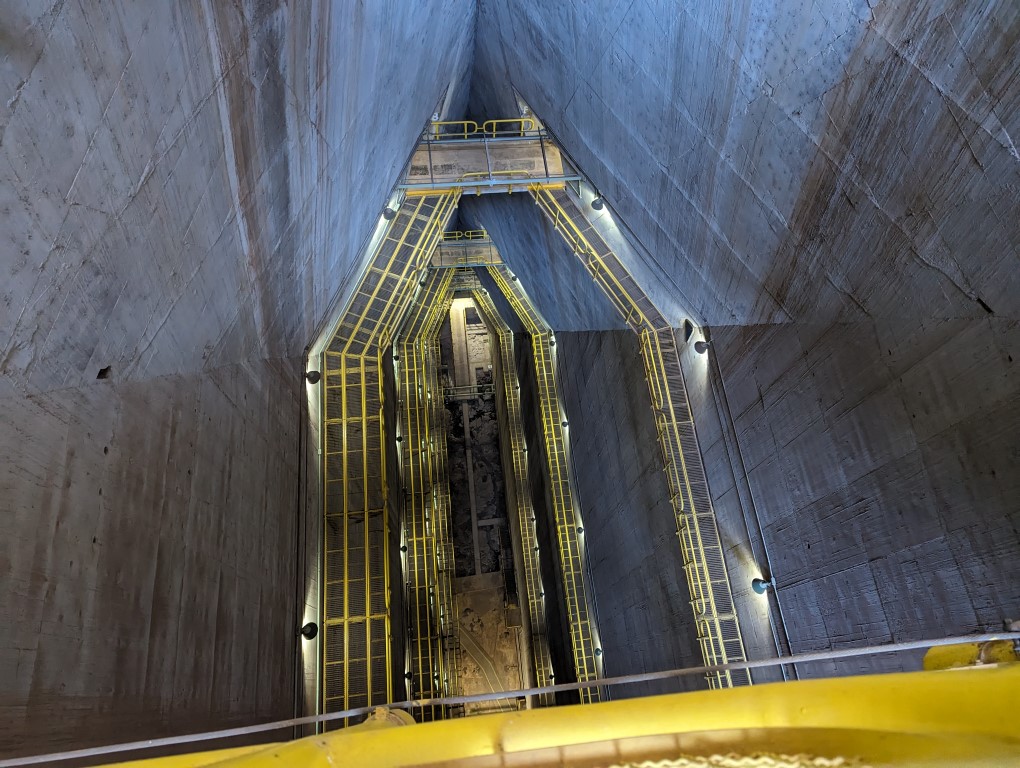
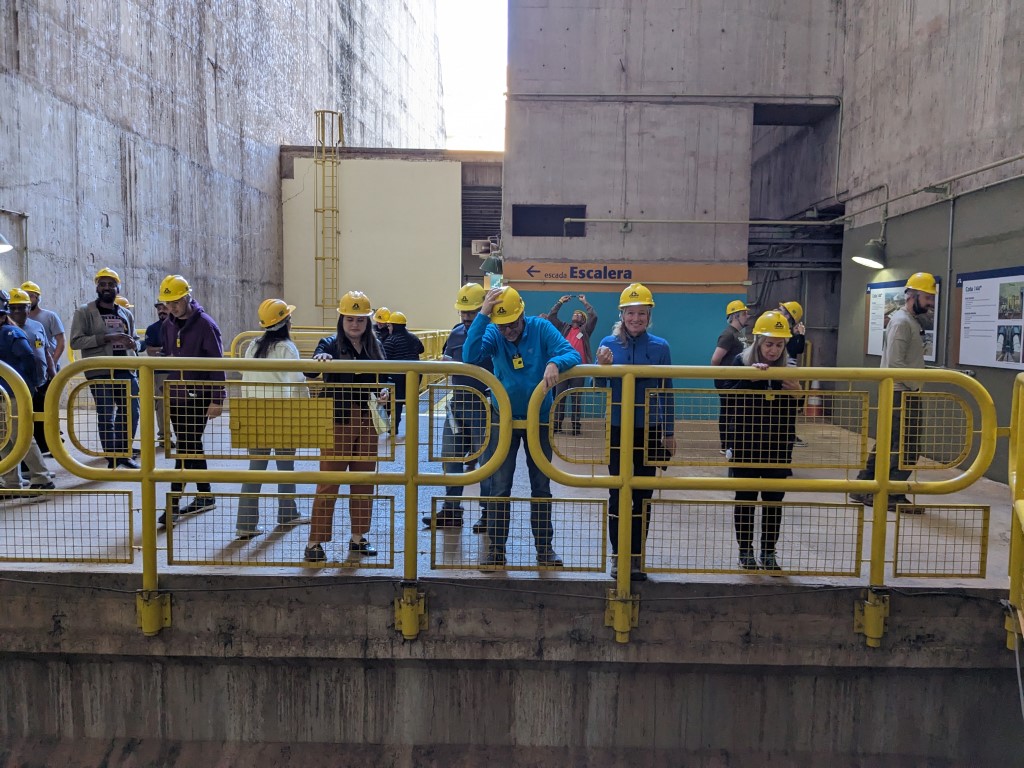
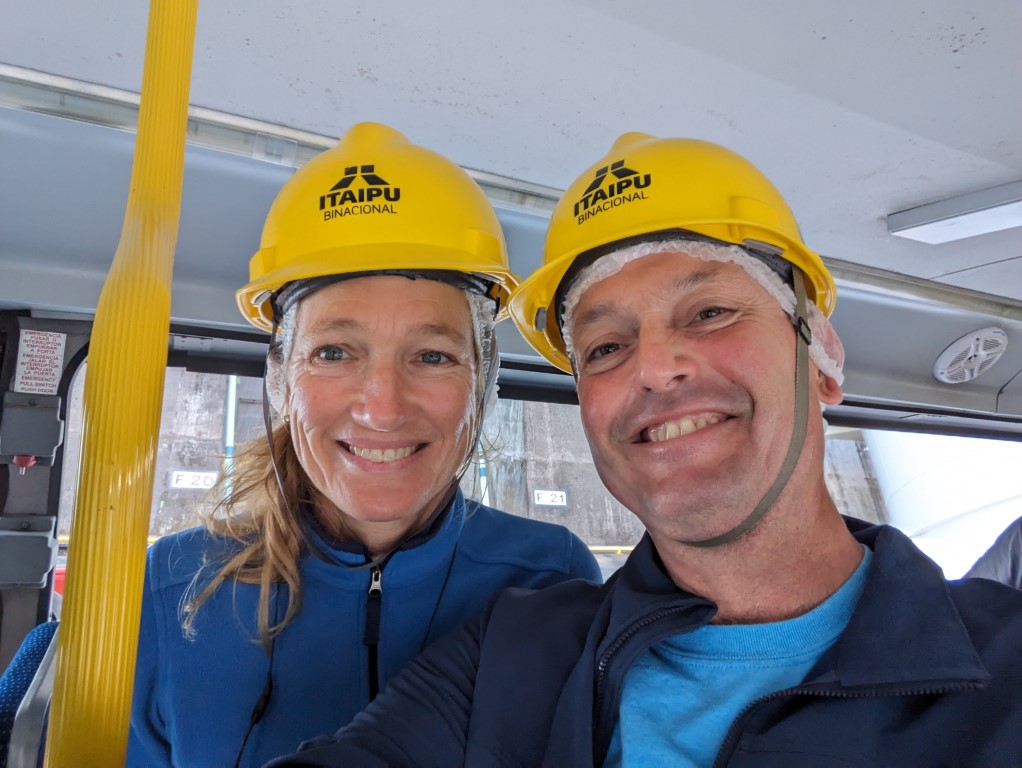
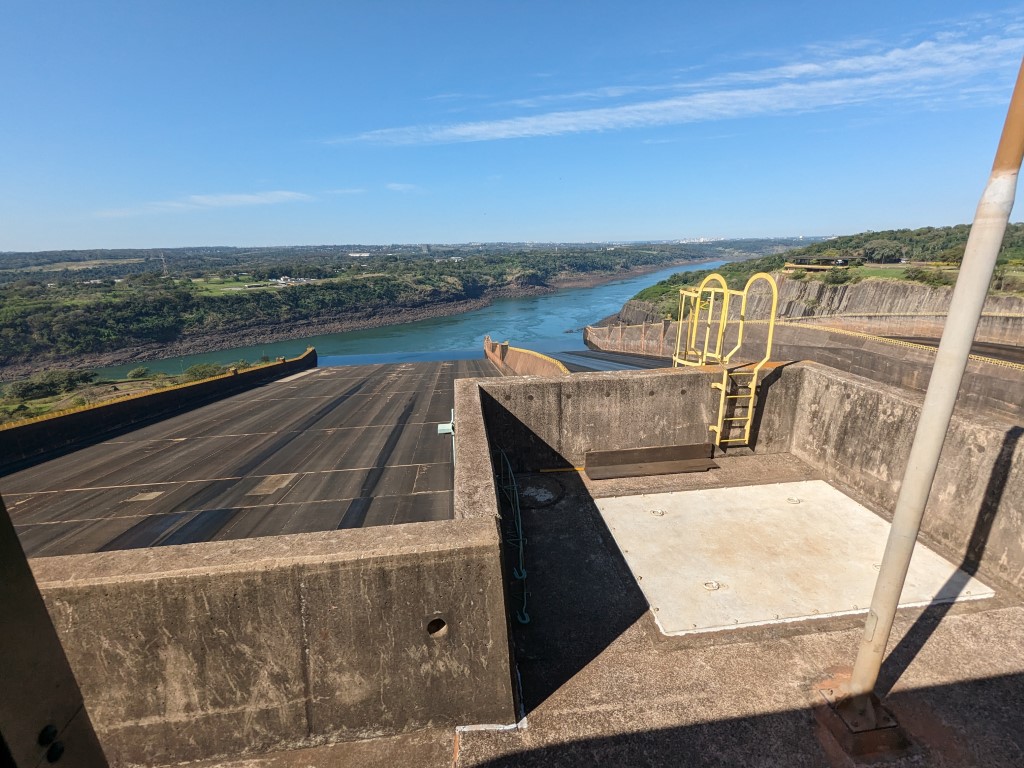
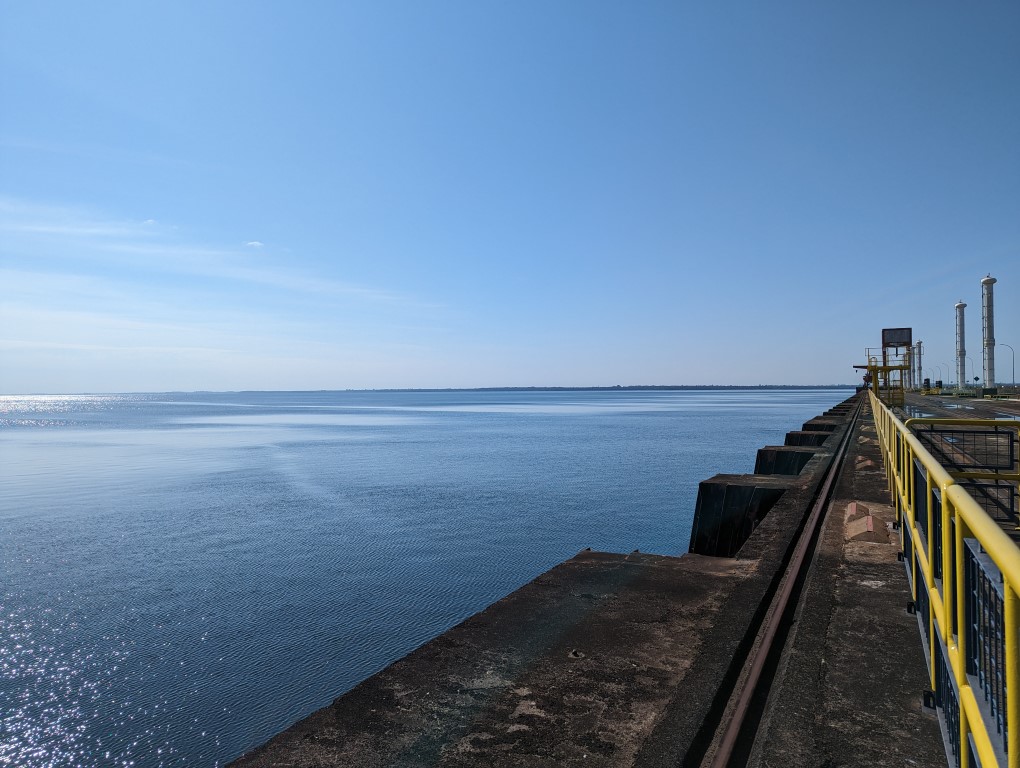
We took an in depth tour of the dam because it was highly recommended and we really enjoyed it. We got to go over the top of the dam, see the spillways, the reservoir, then down into the bowels of it to the control room and even to the spinning shaft of one of the roaring turbines. This was one of 22 that they have. They use bikes to get around down there from one to the other and a bike path is laid out, or they can walk. The sheer size of the place and the details on how it was constructed really do bring home the fact that man can really build some incredible things, bit by bit. And then finally, it’s complete, up & running. It’s both sad & miraculous. But we all need & want electricity.
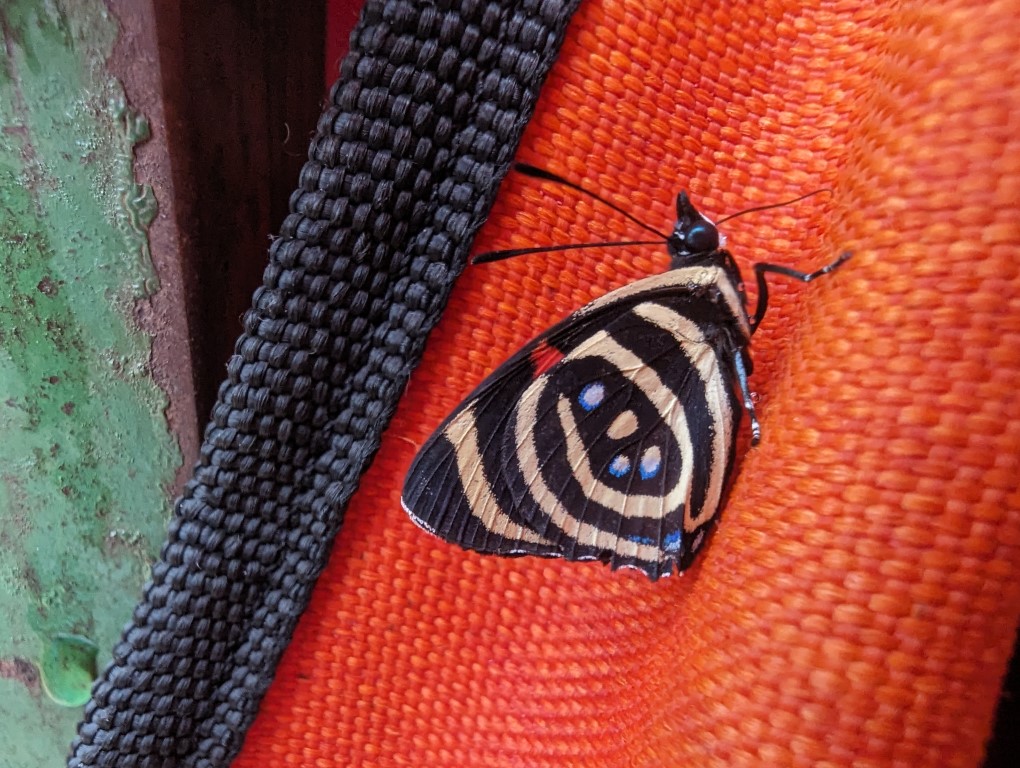
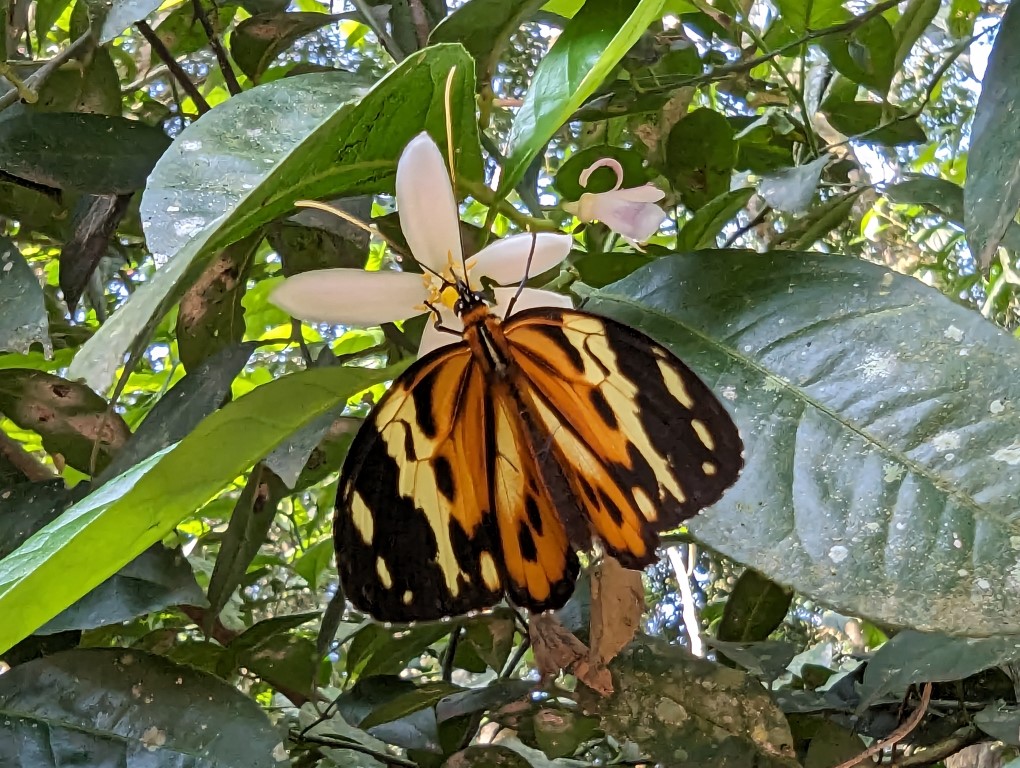
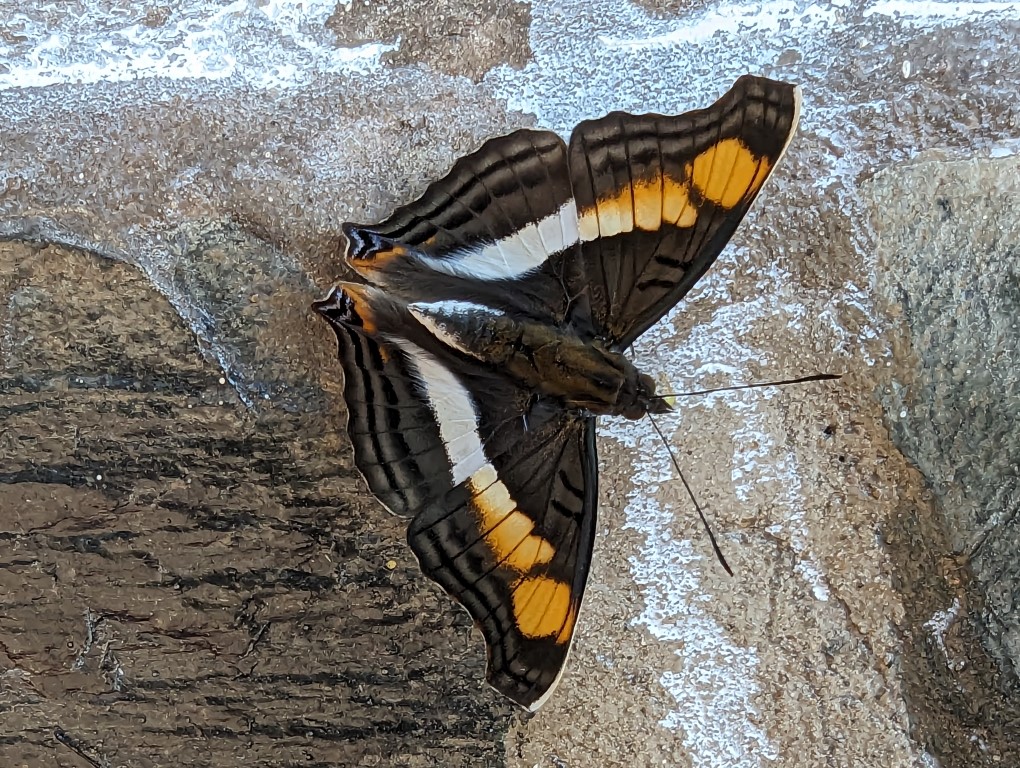
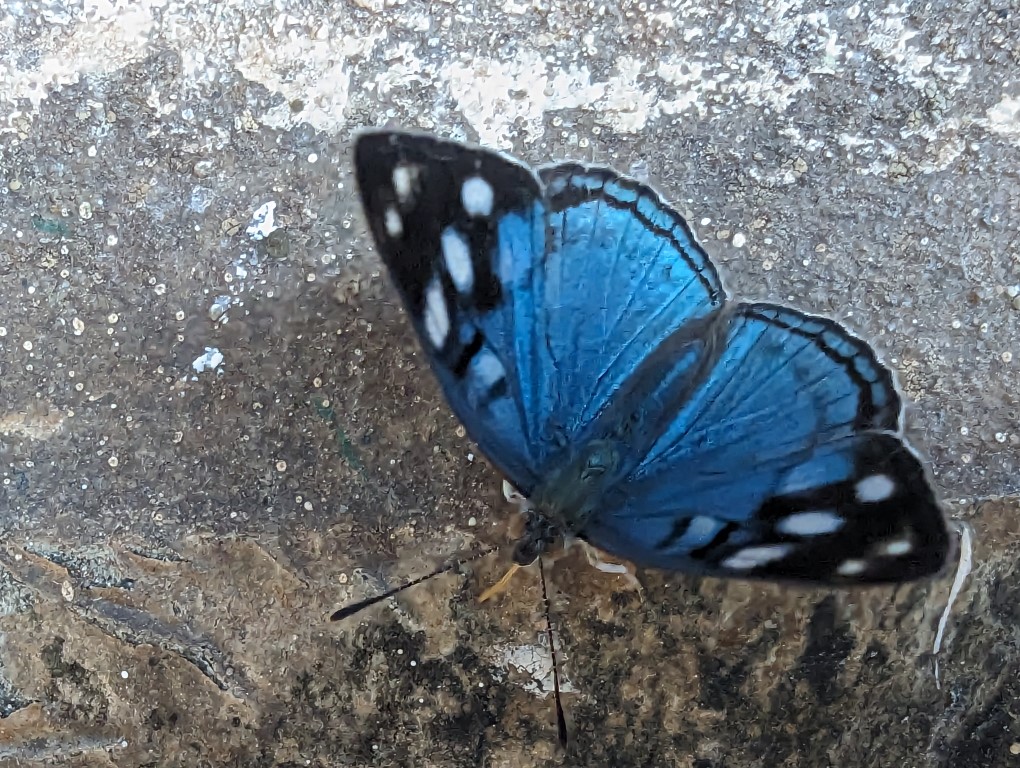
And our exploration just keeps going but I’ll stop here. We are really enjoying Brazil and will continue moving around it until we turn south to try and greet Spring in Patagonia.
